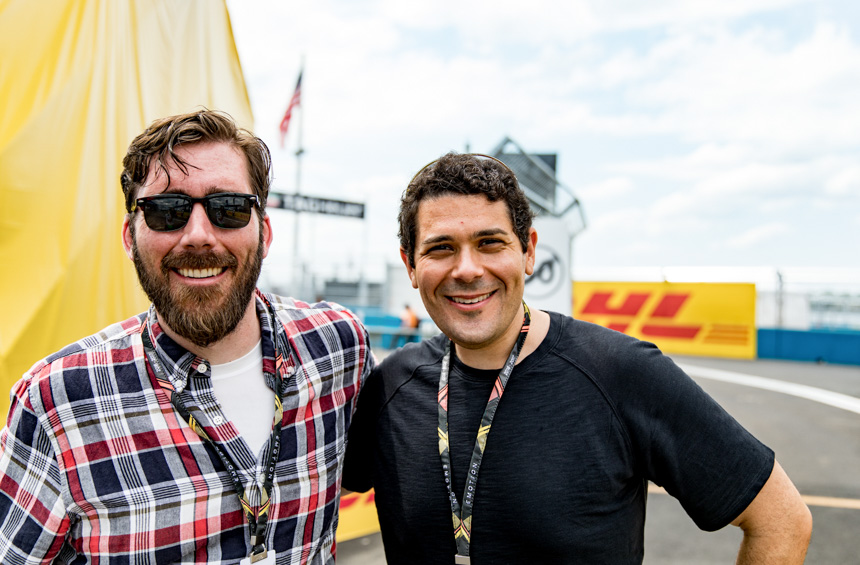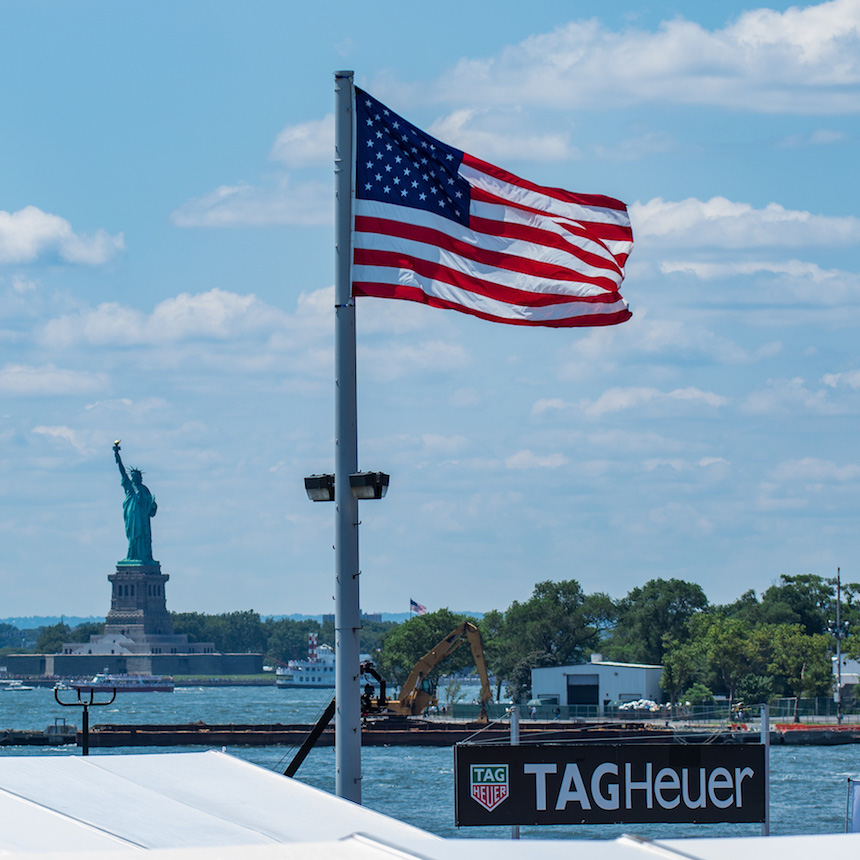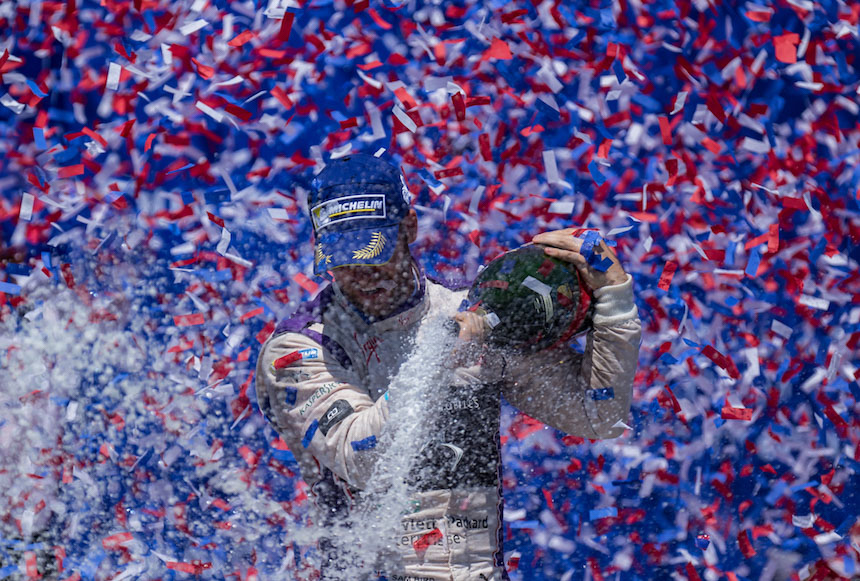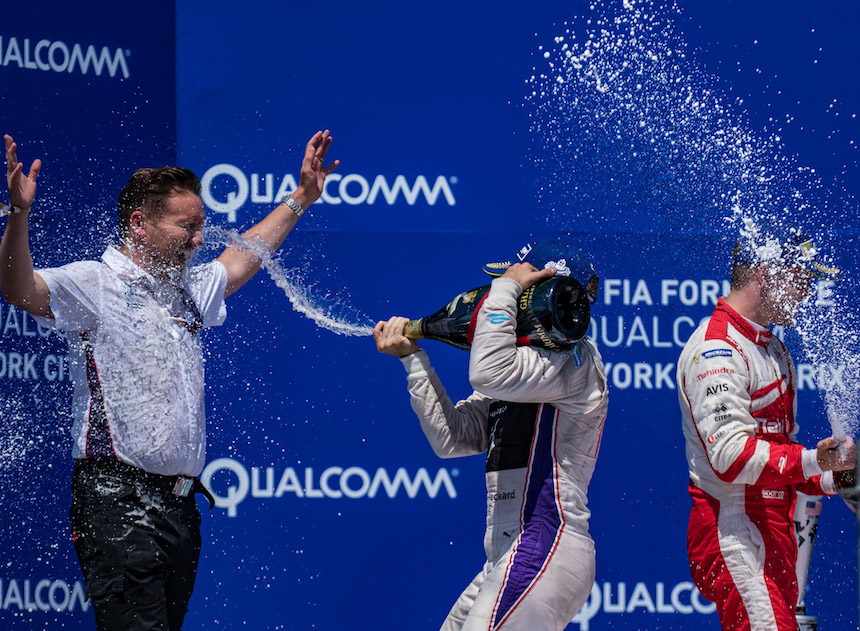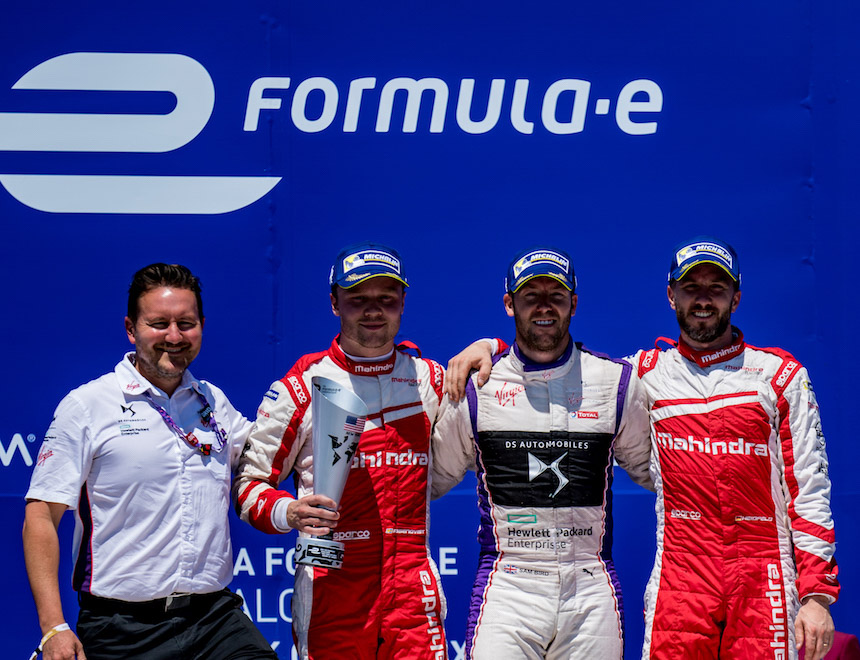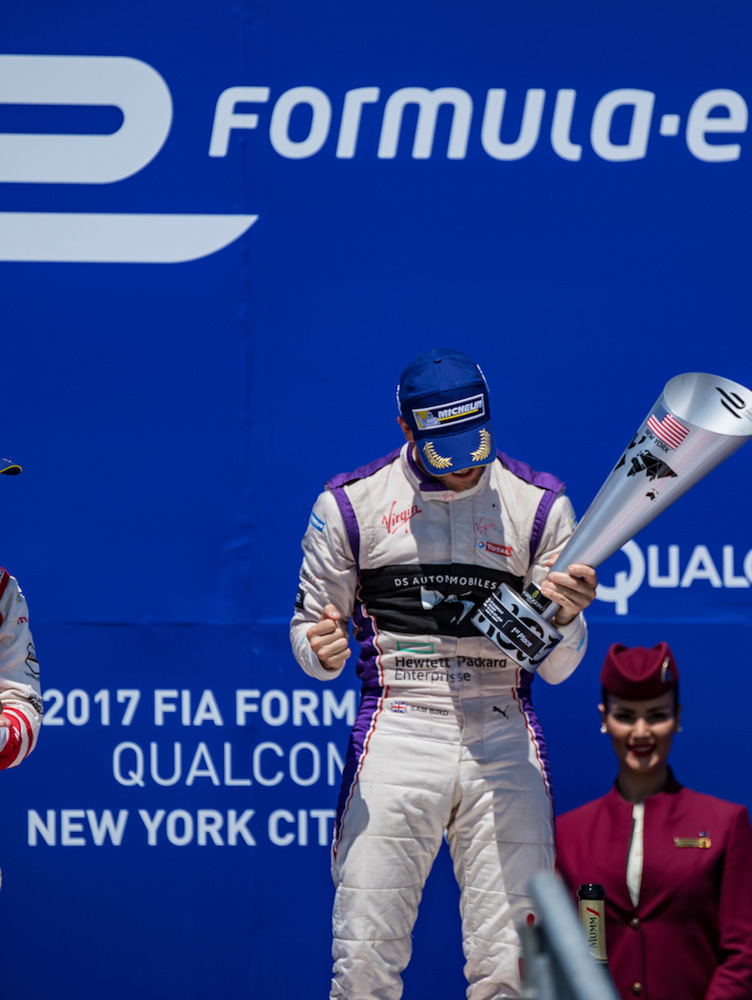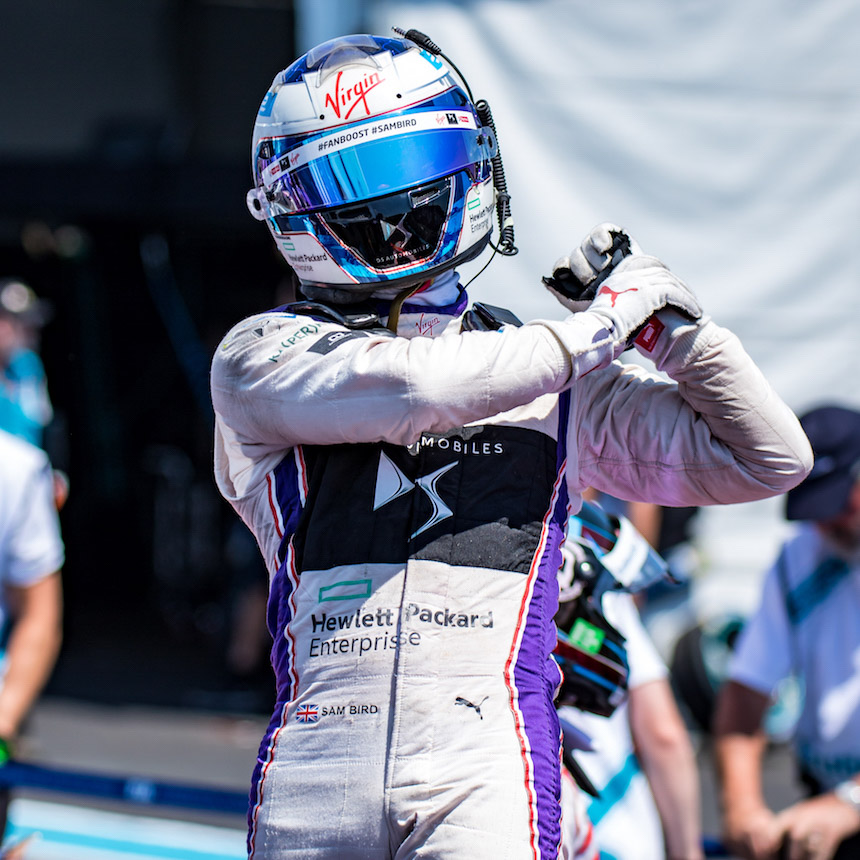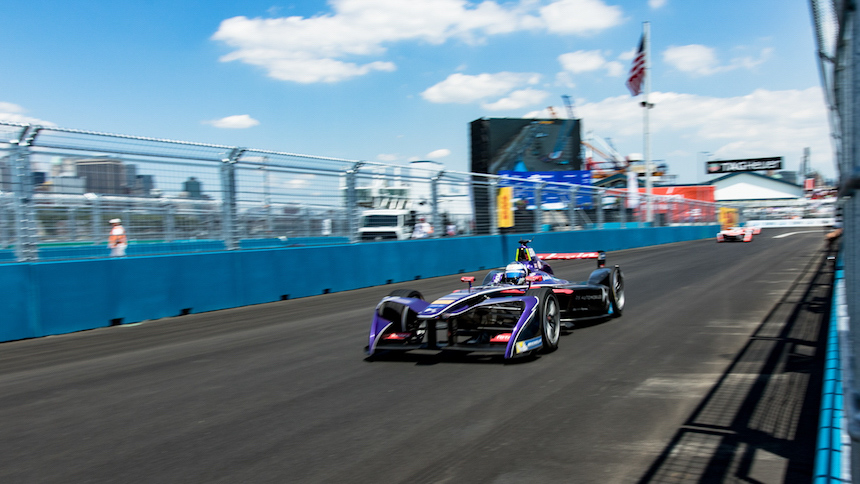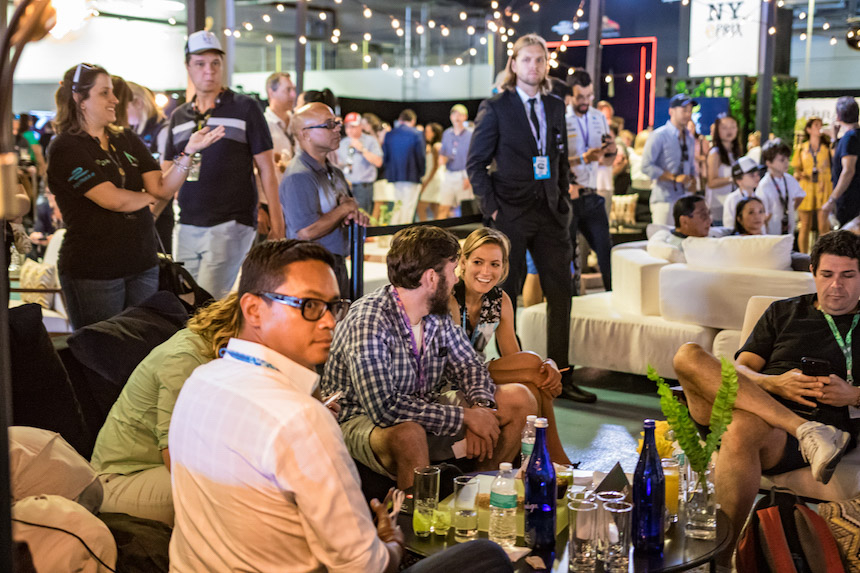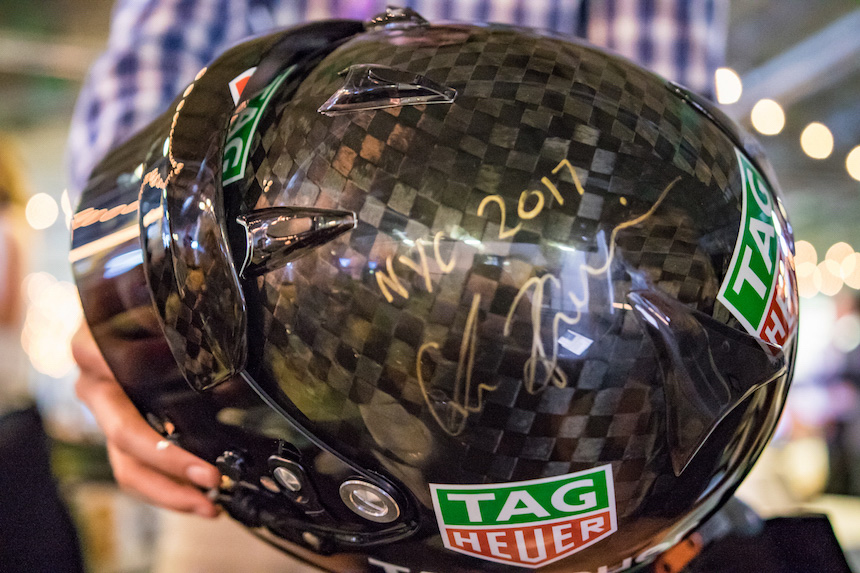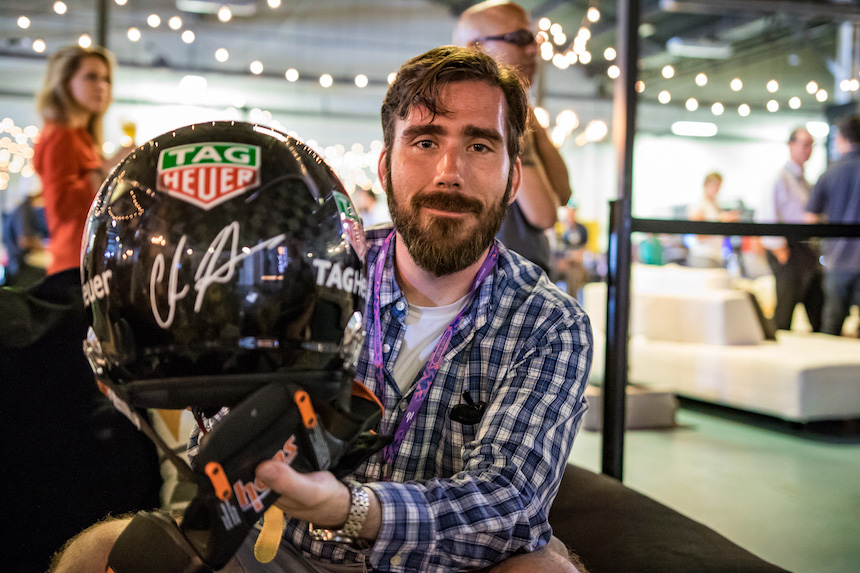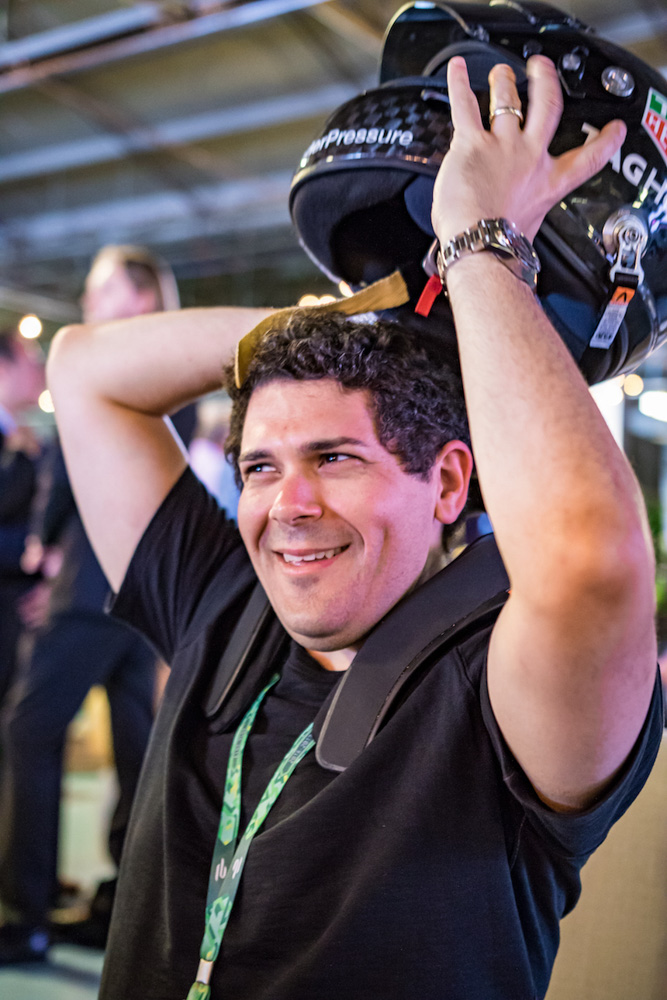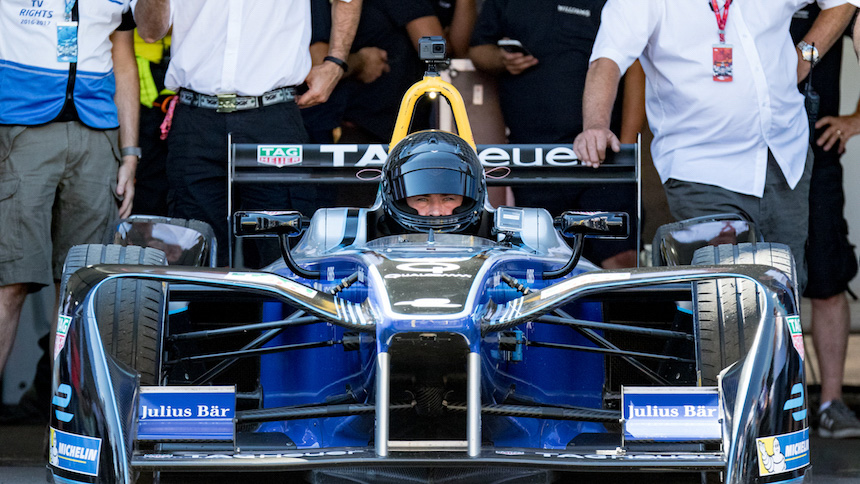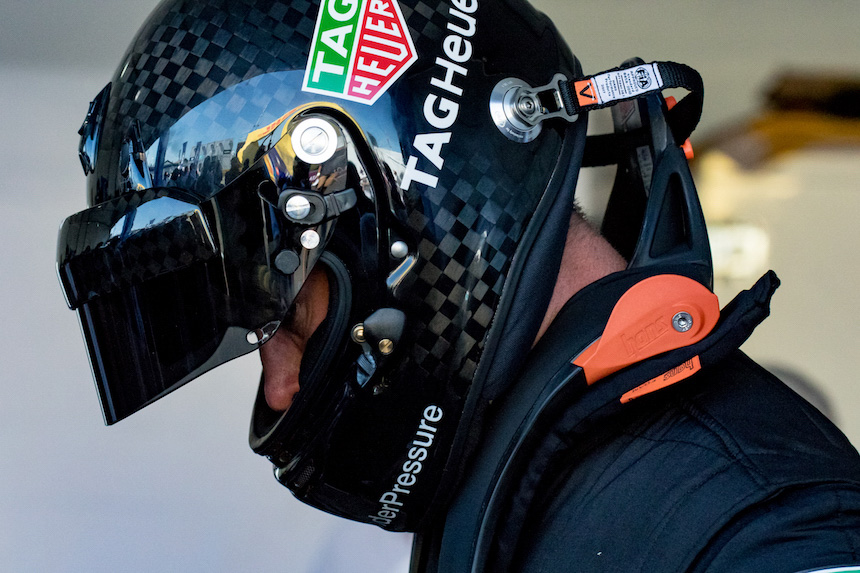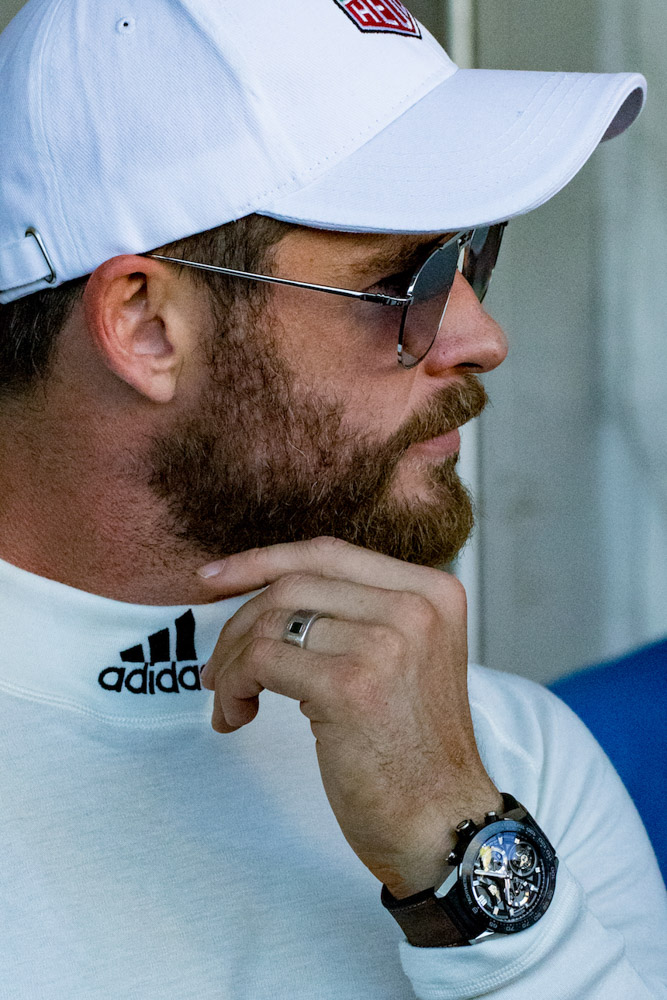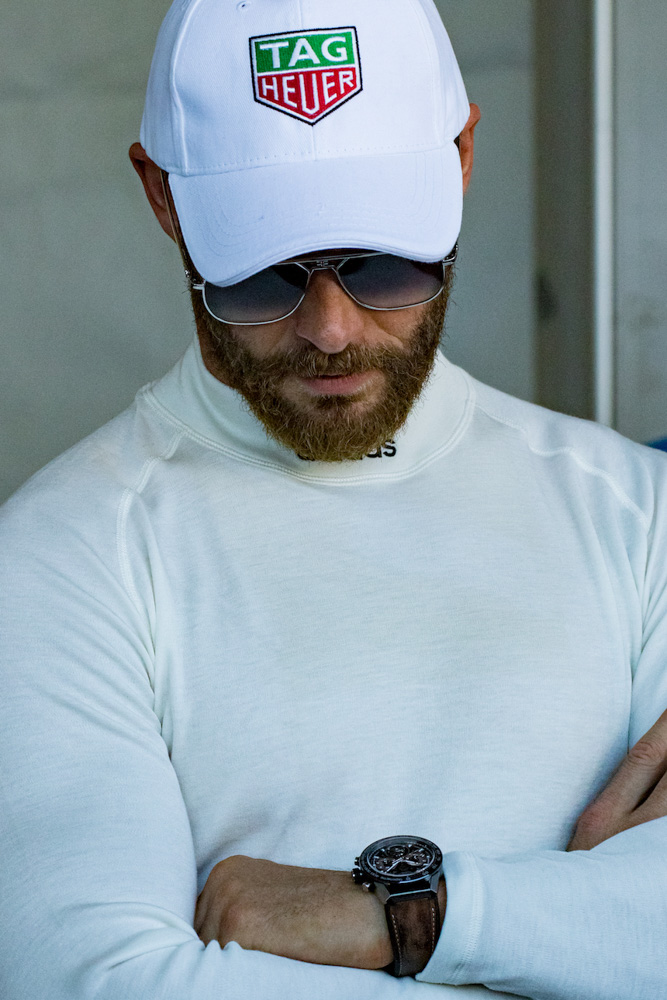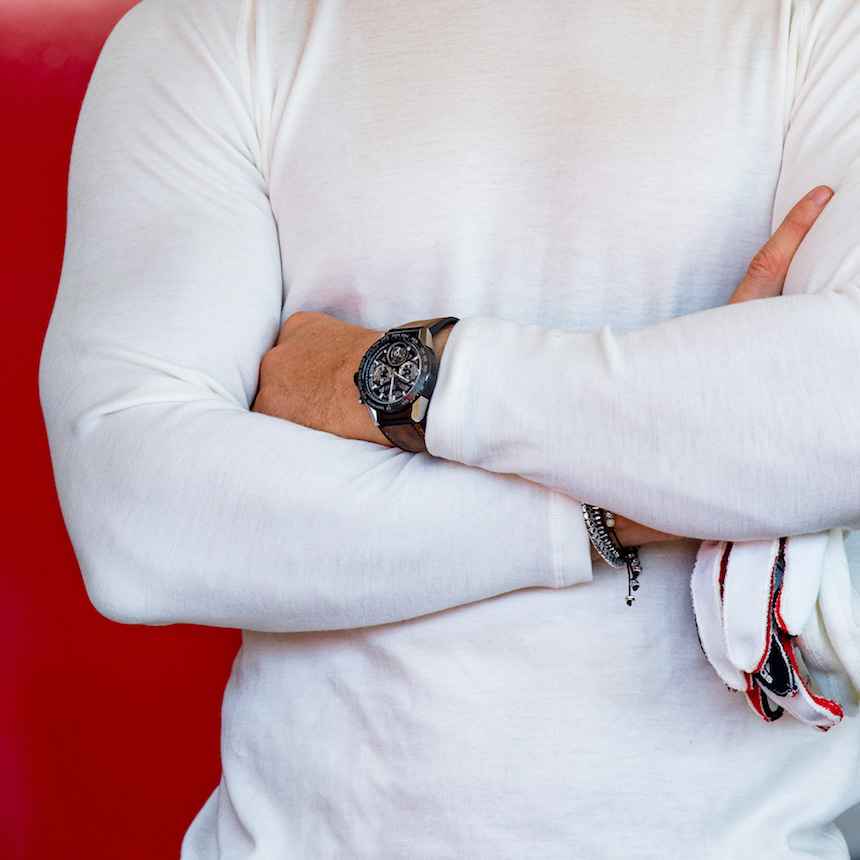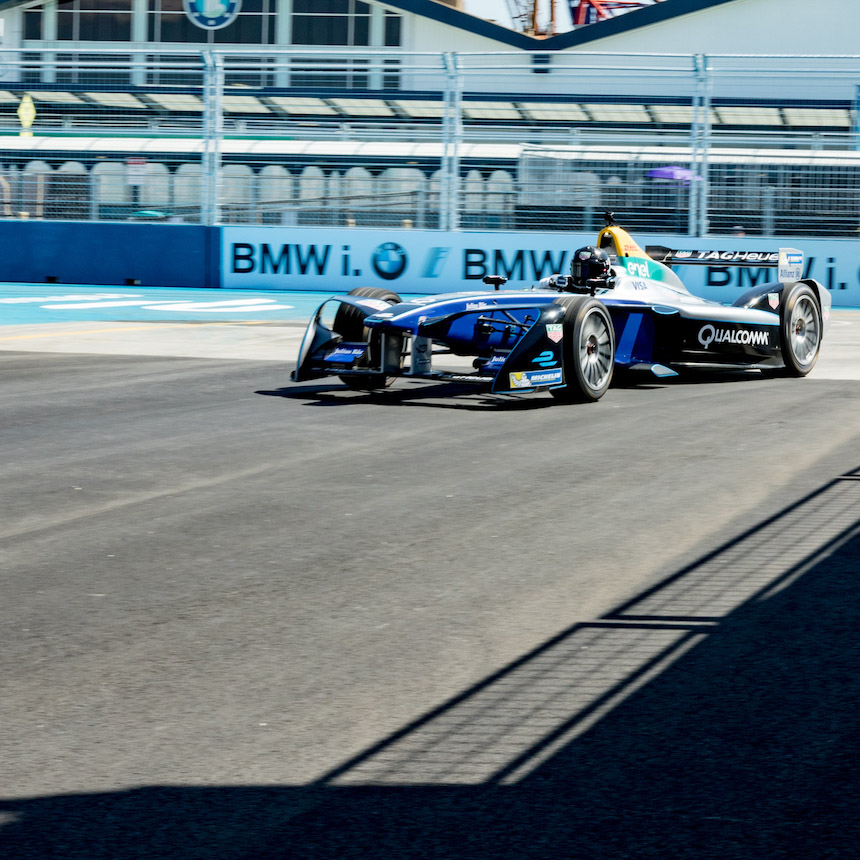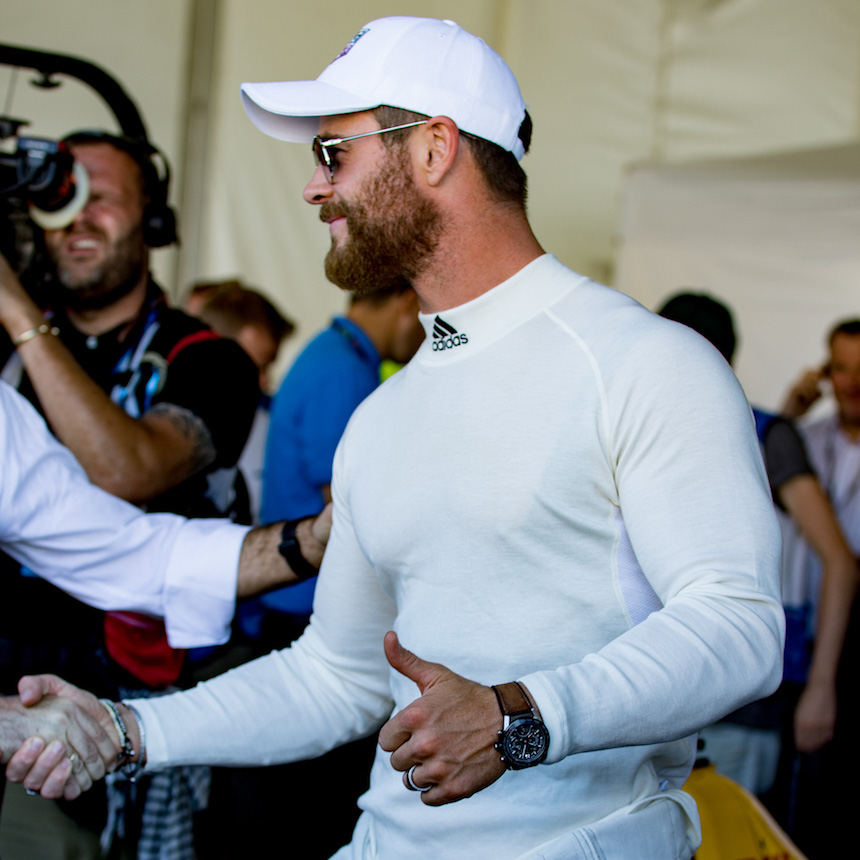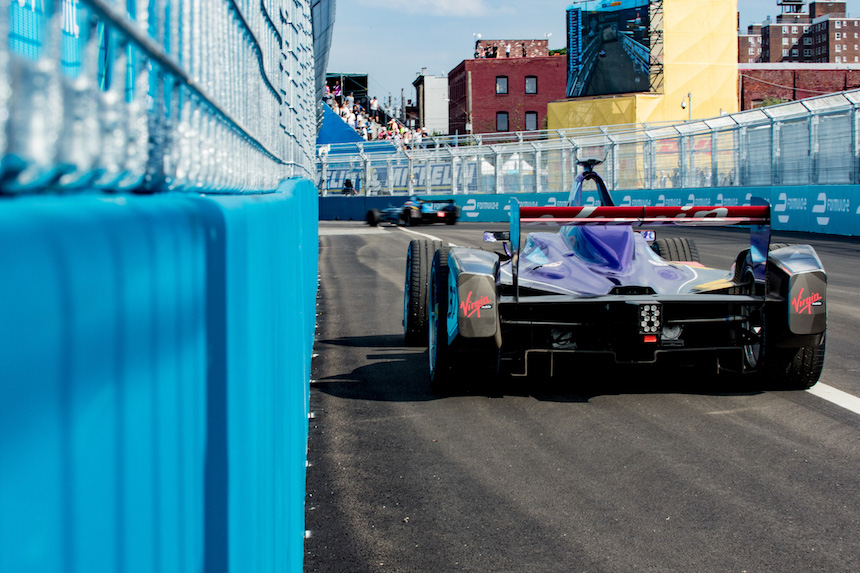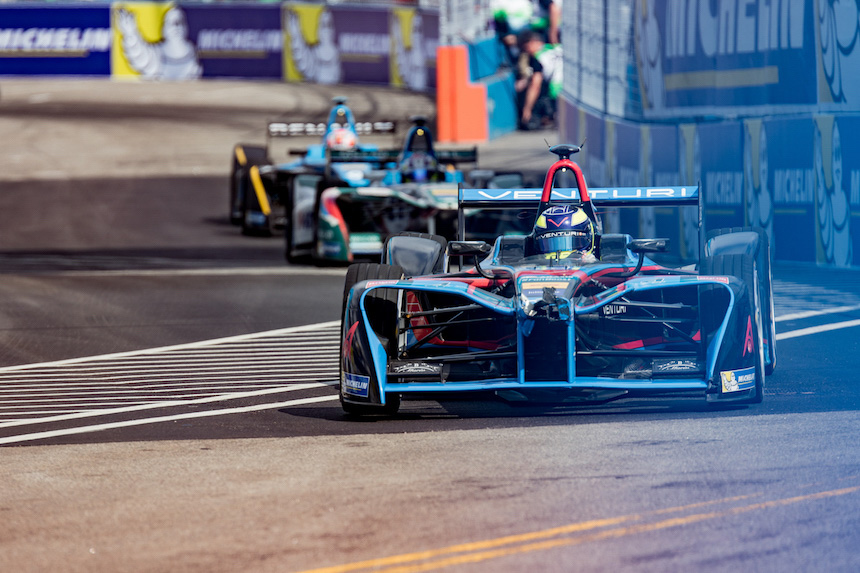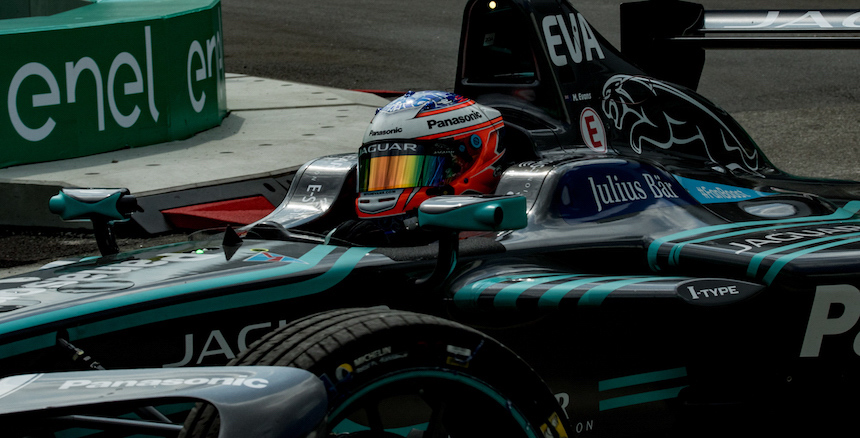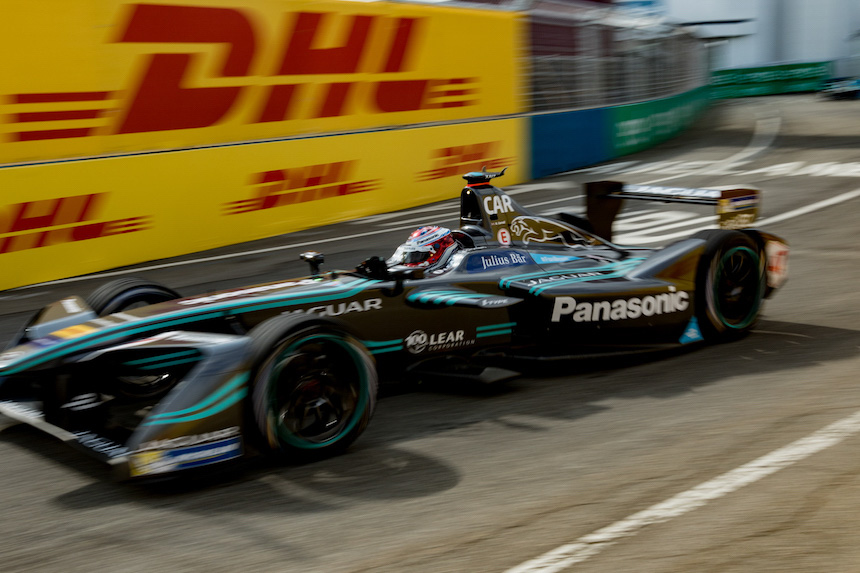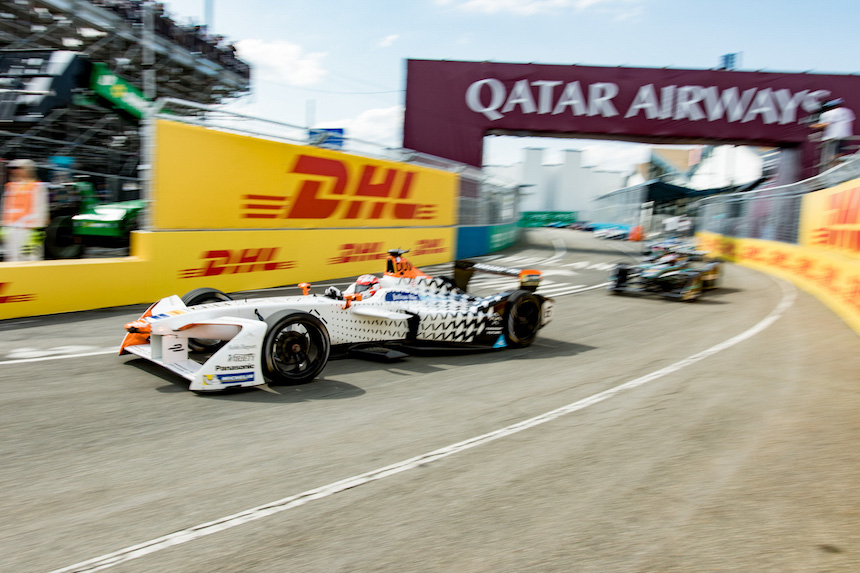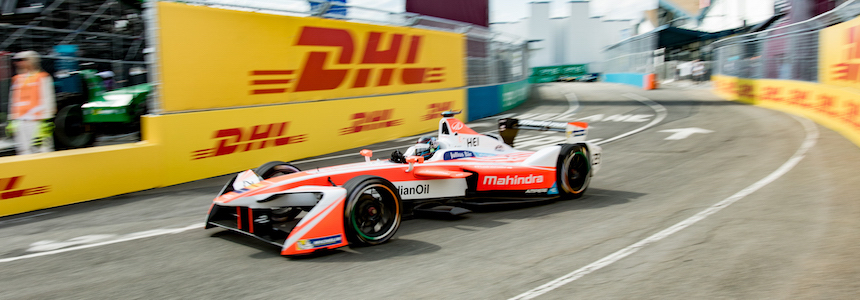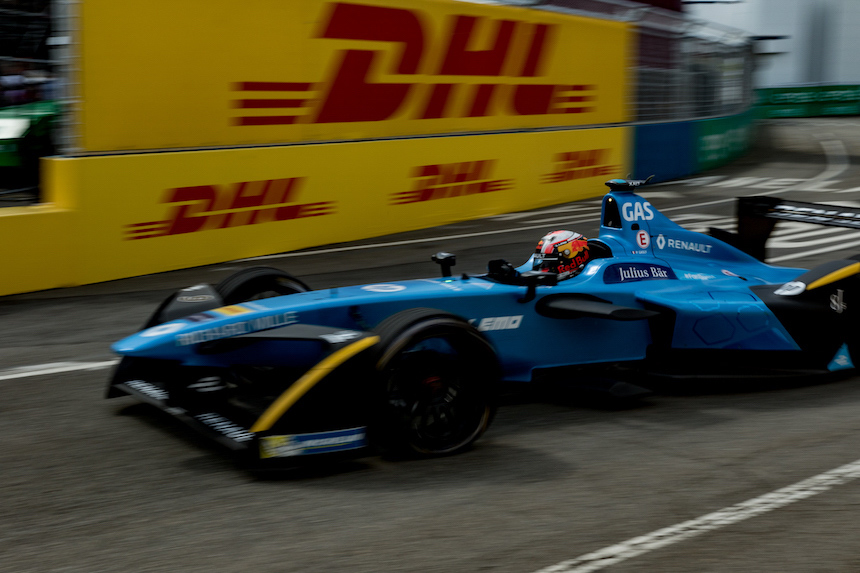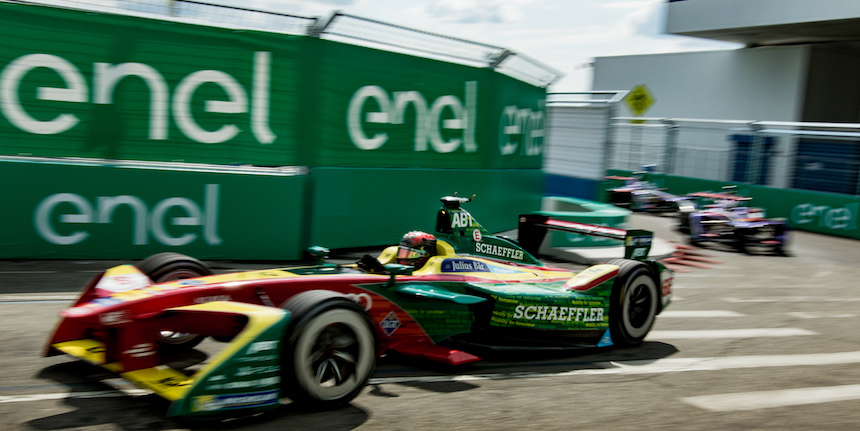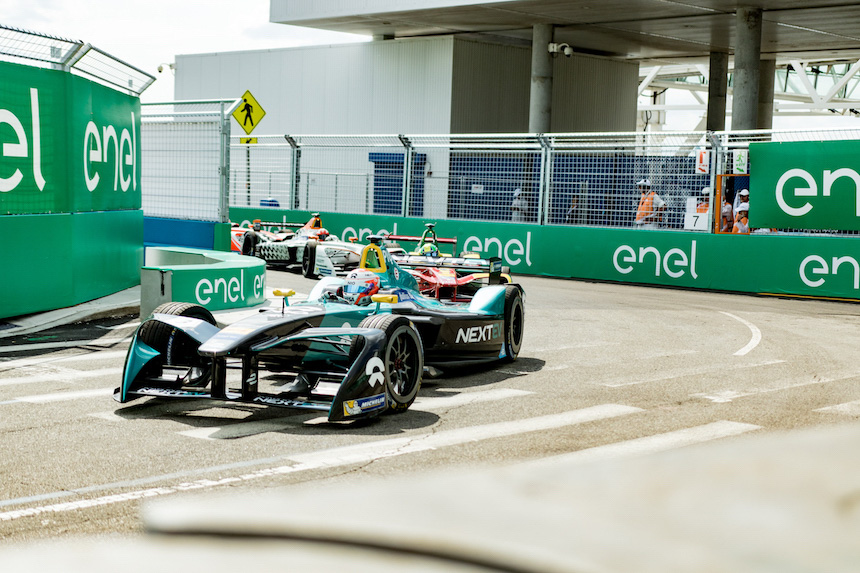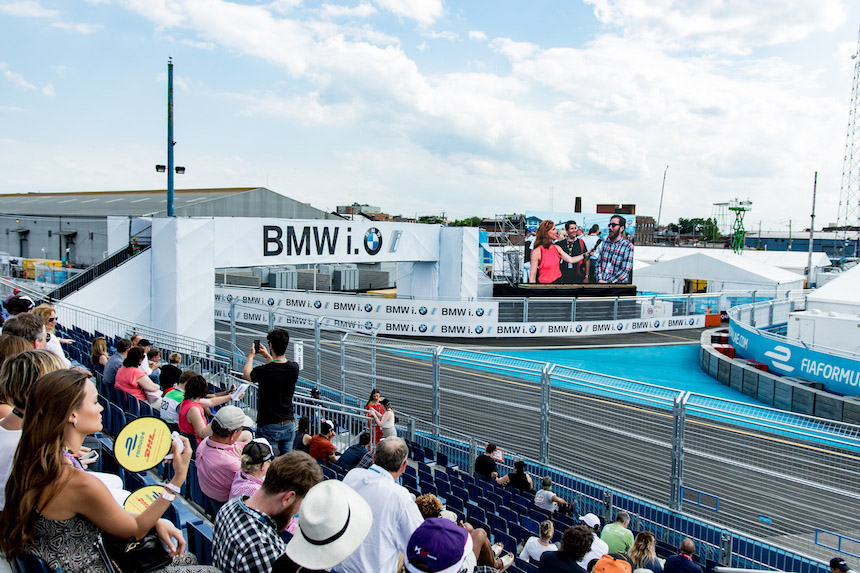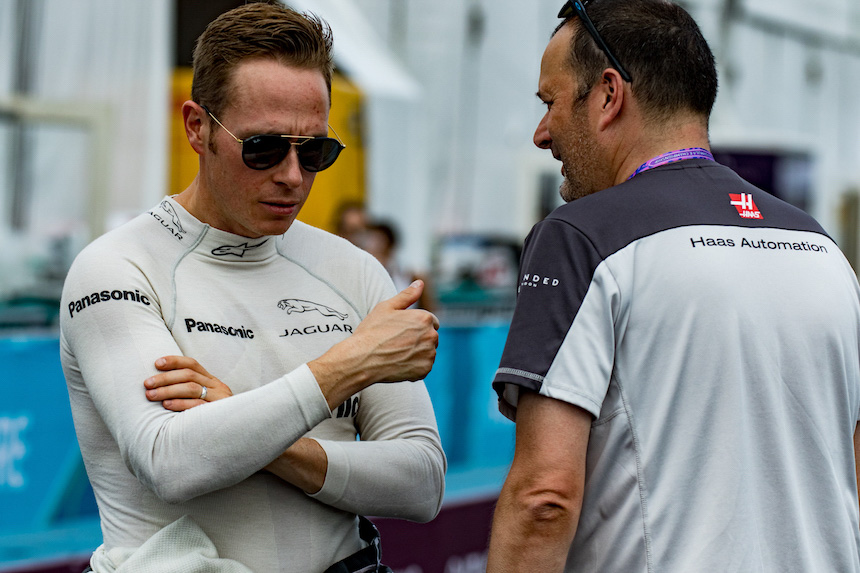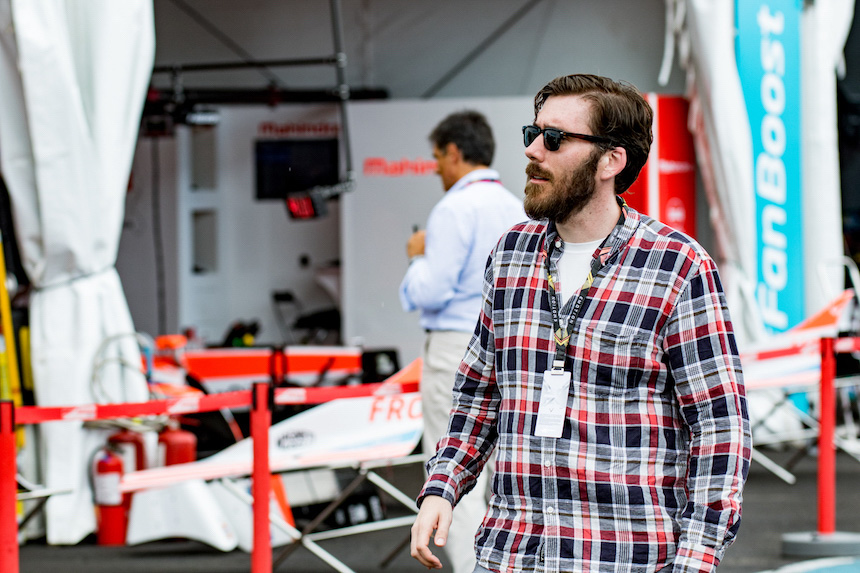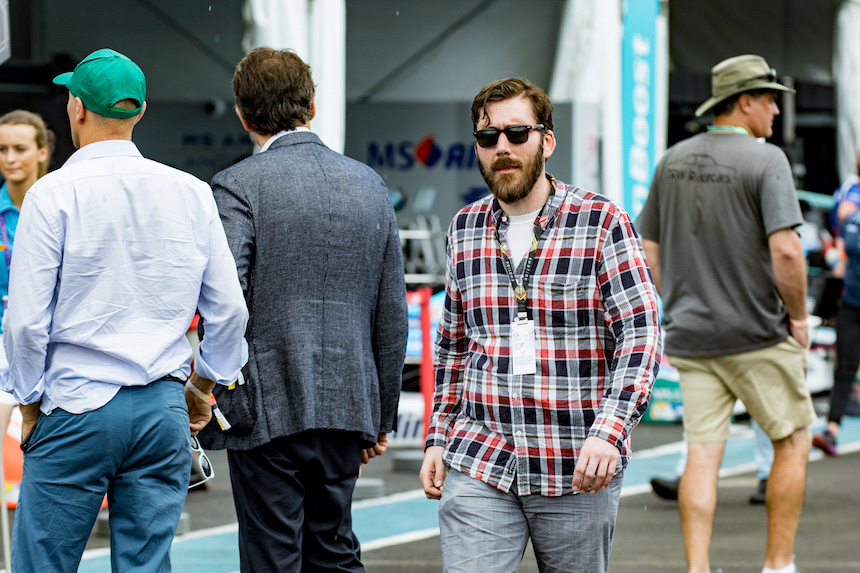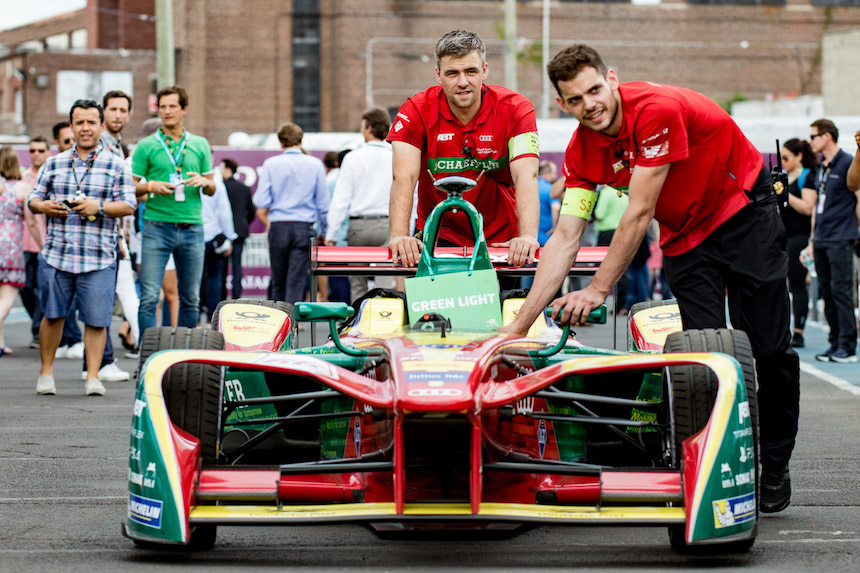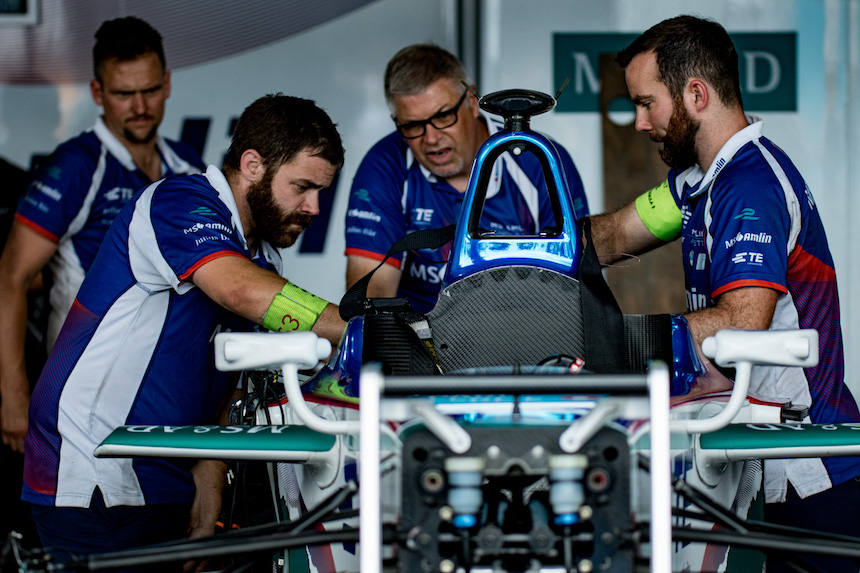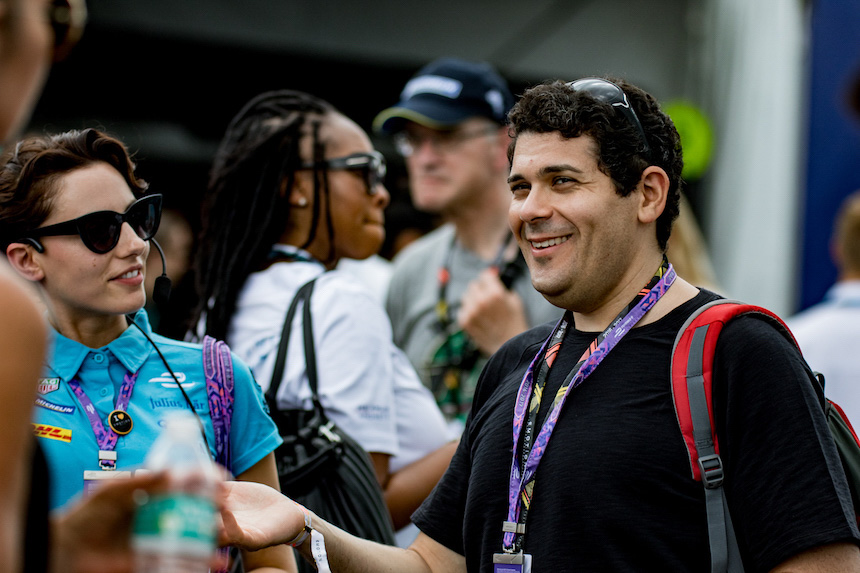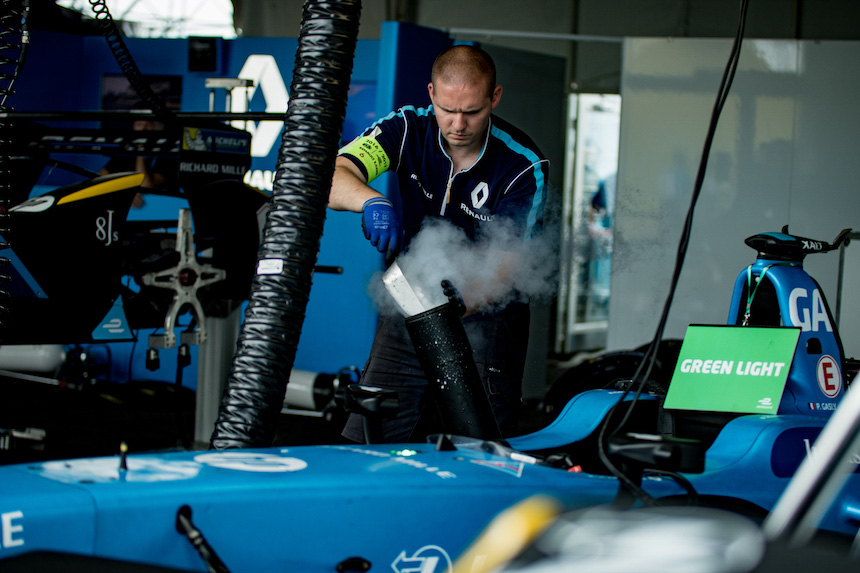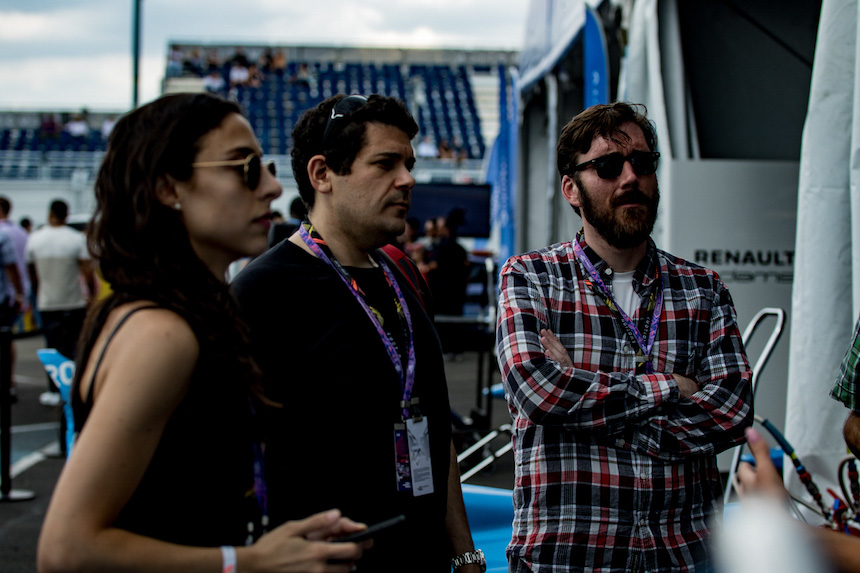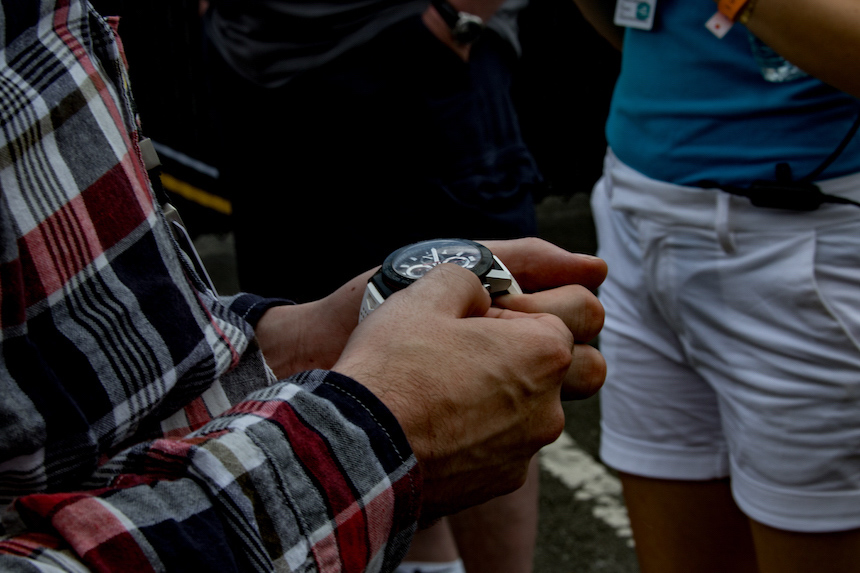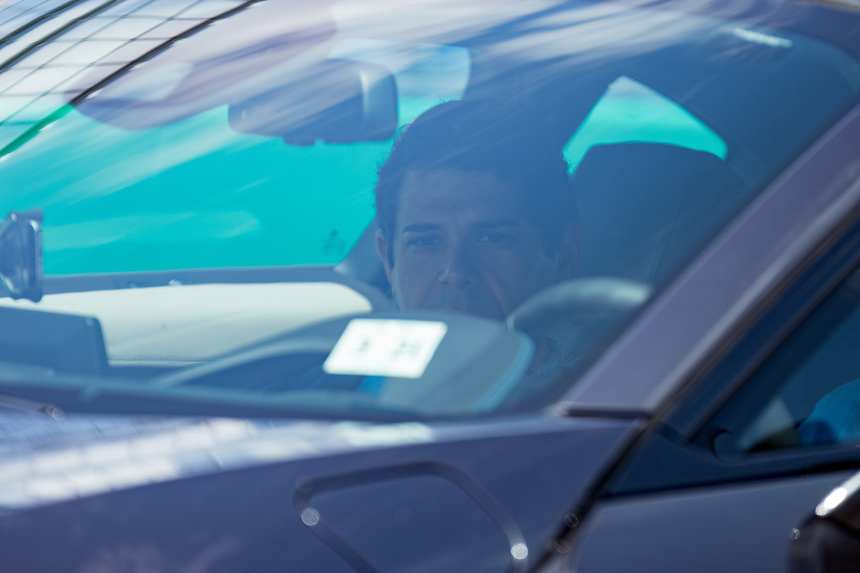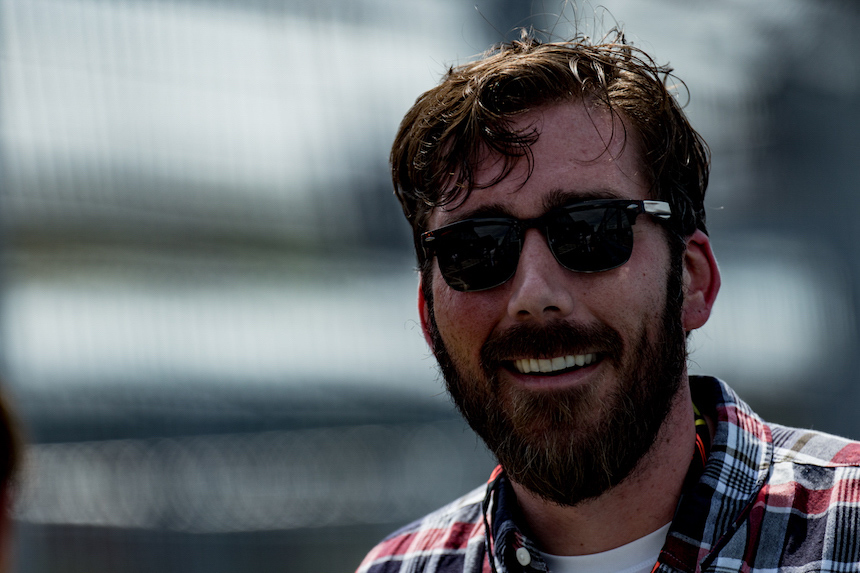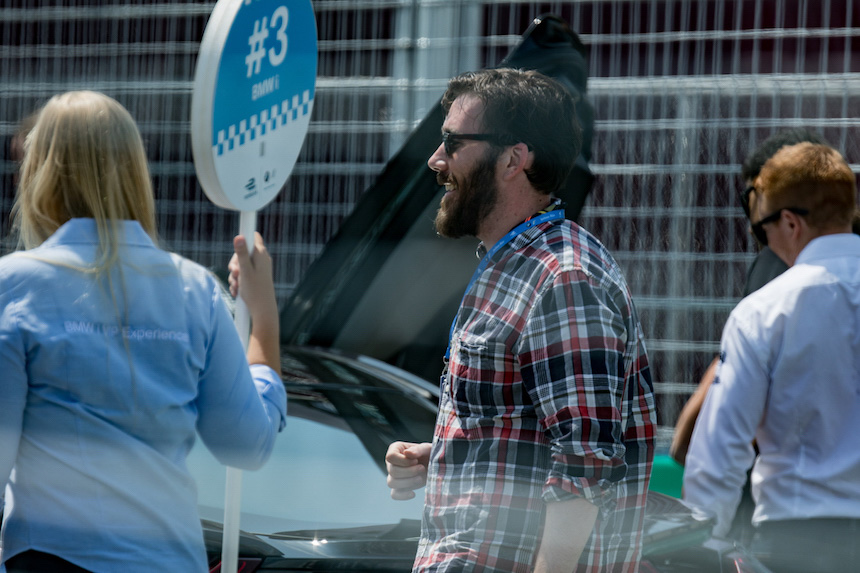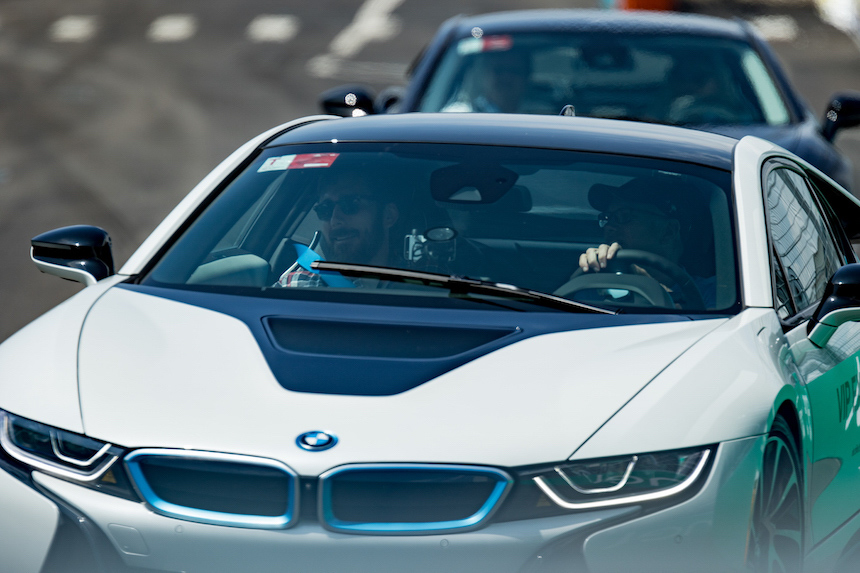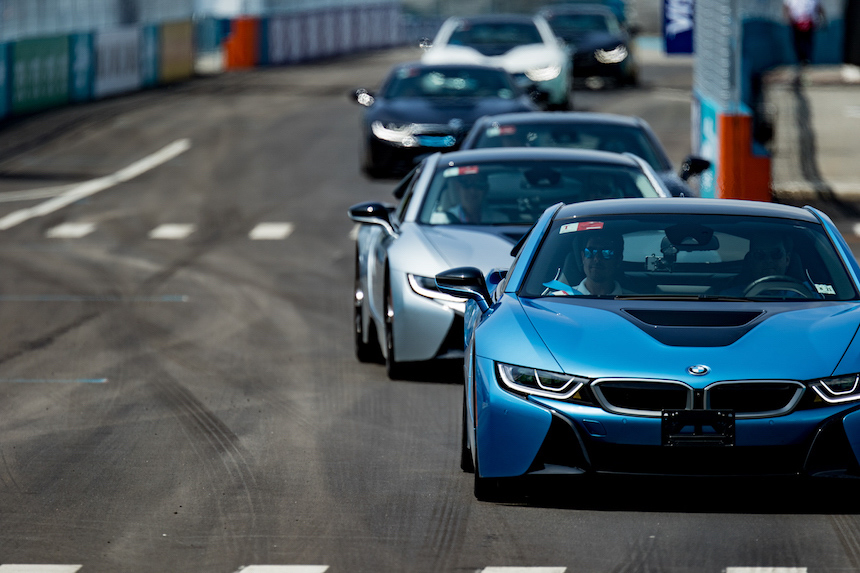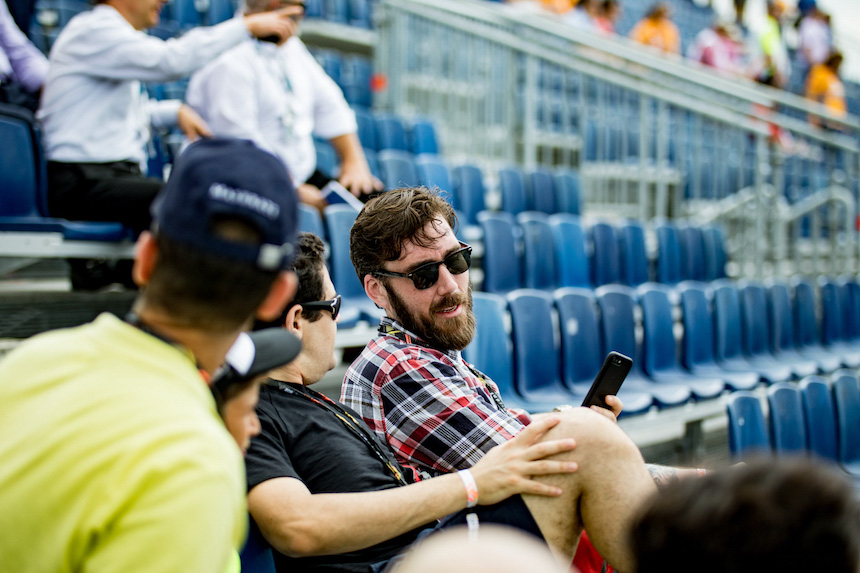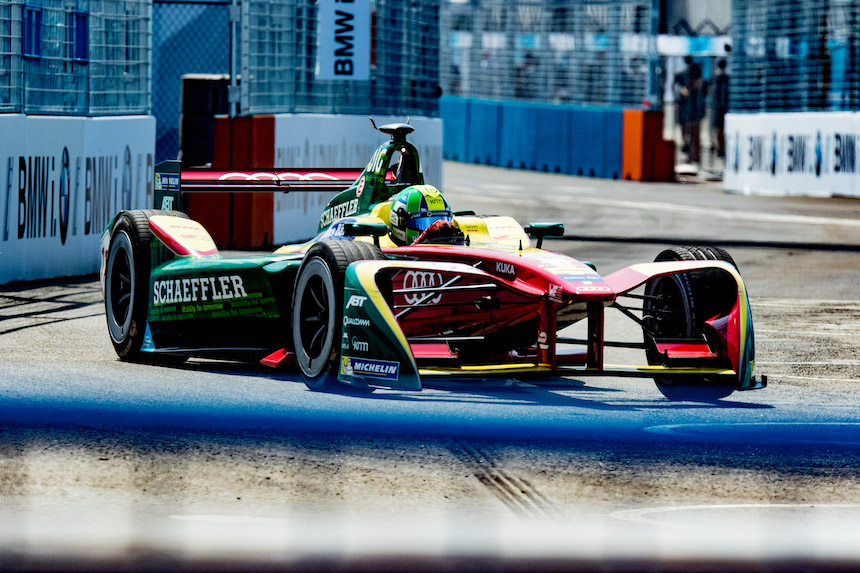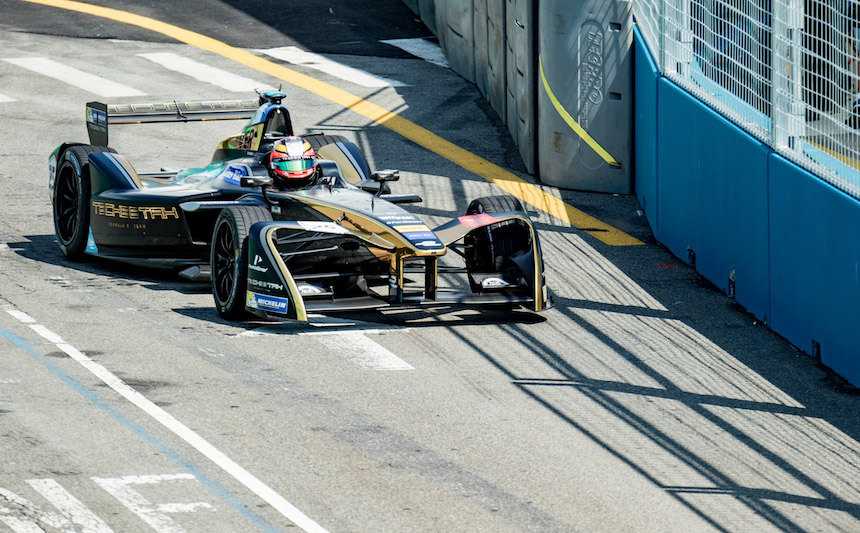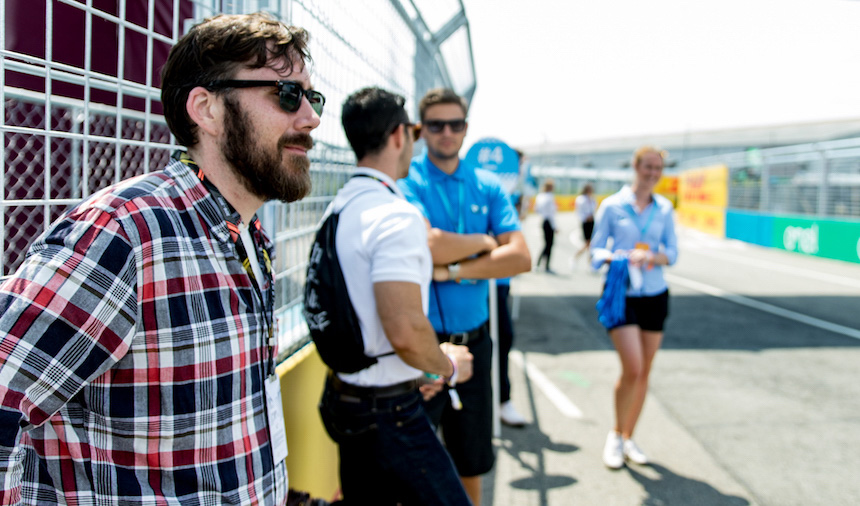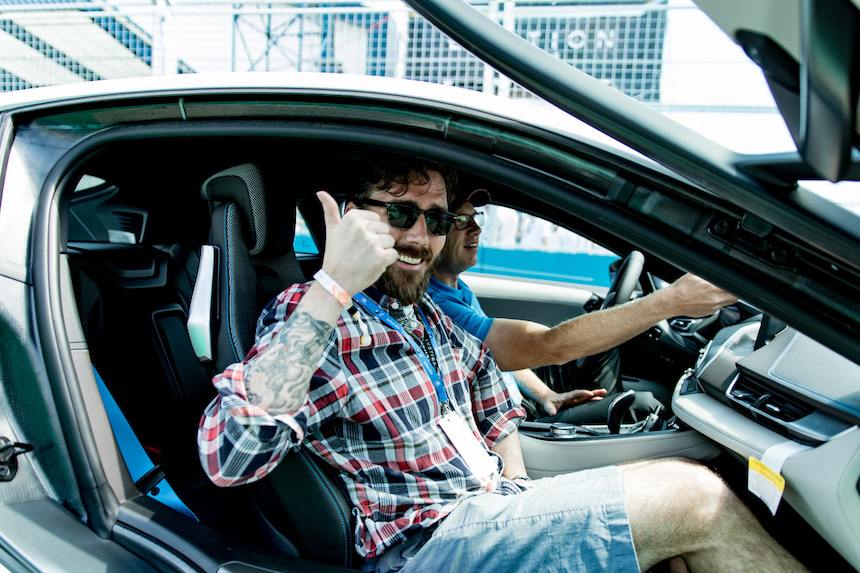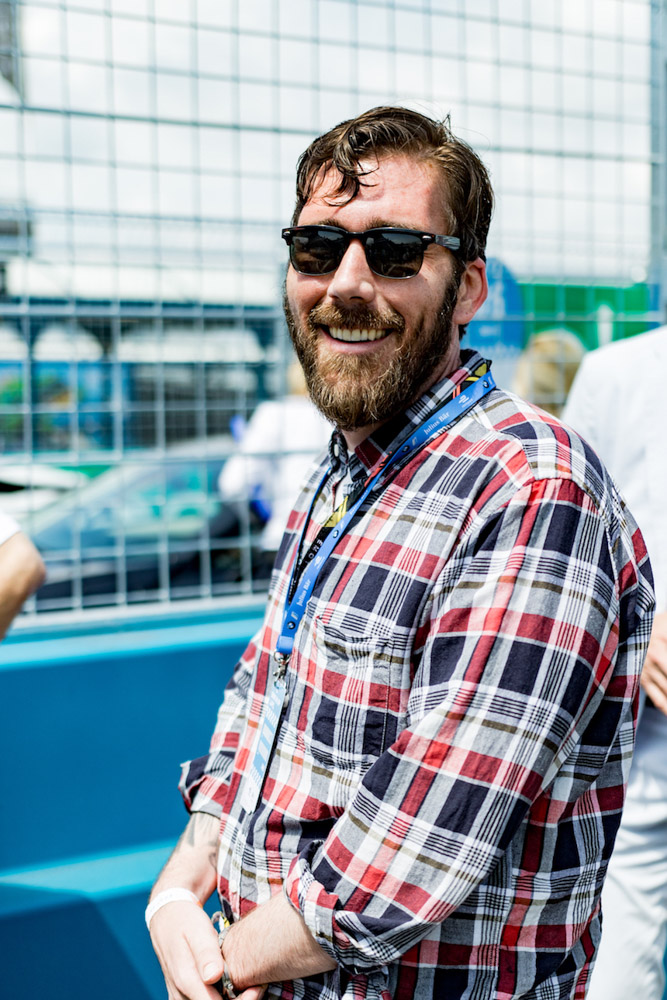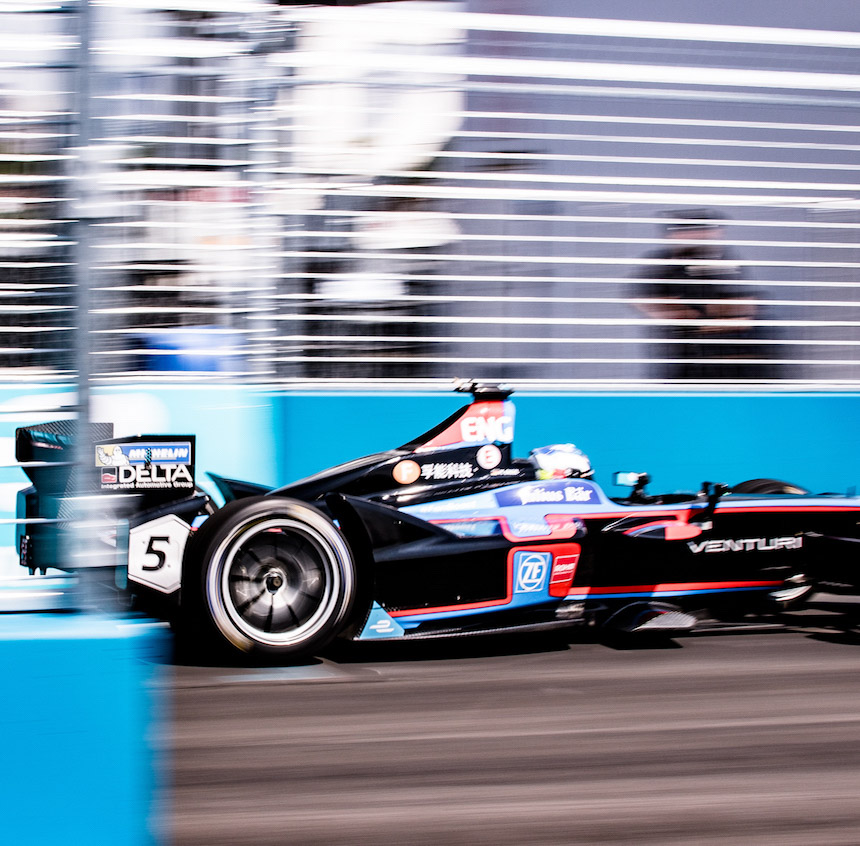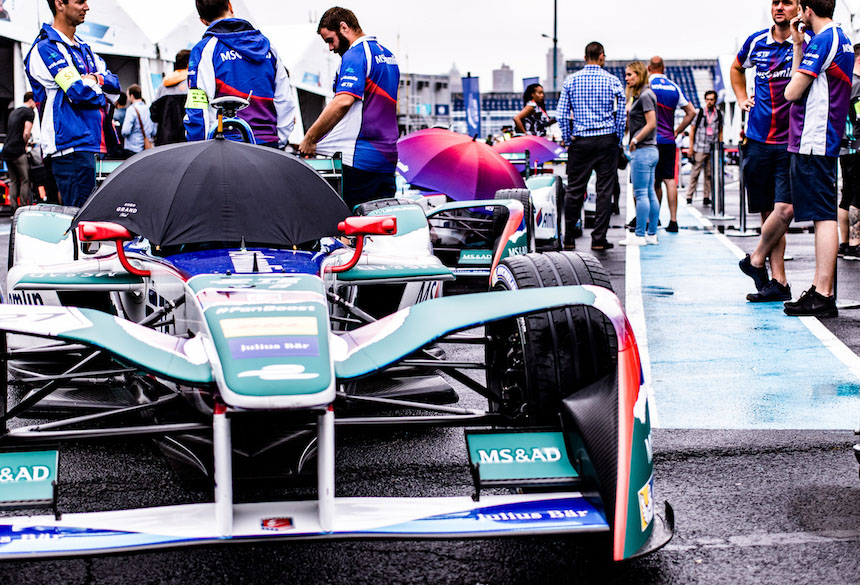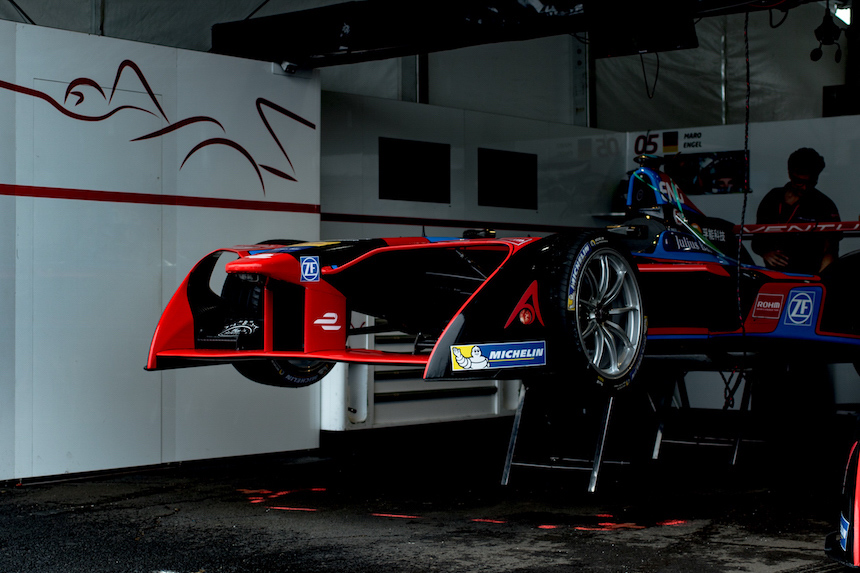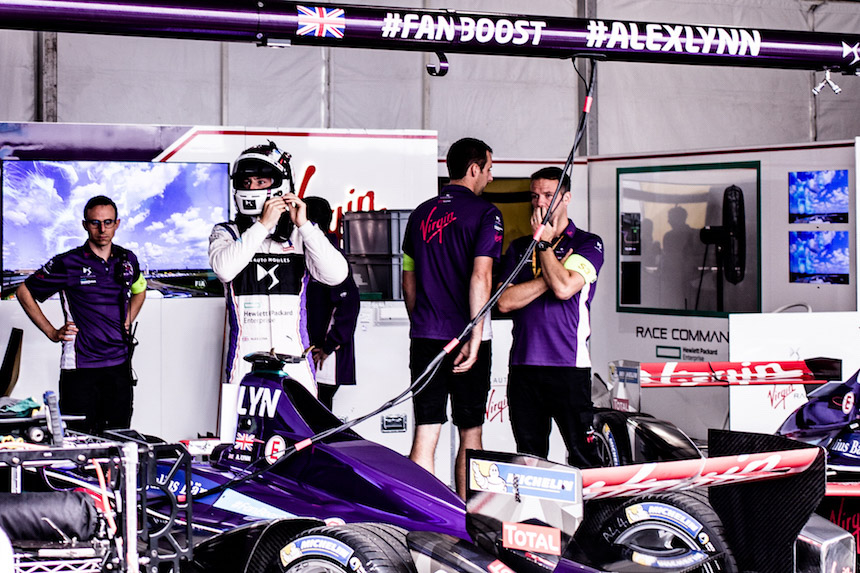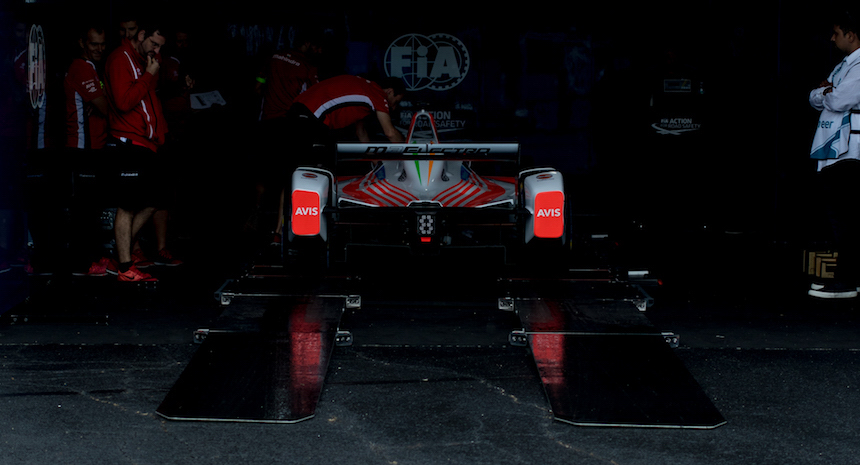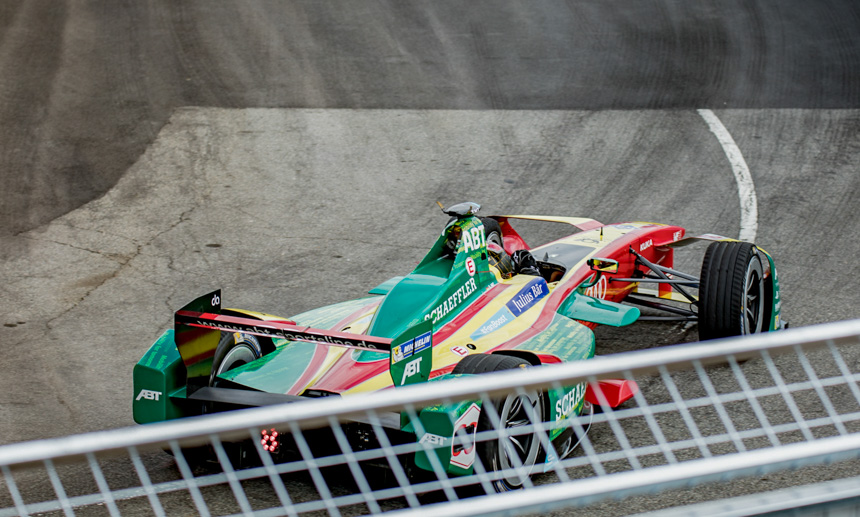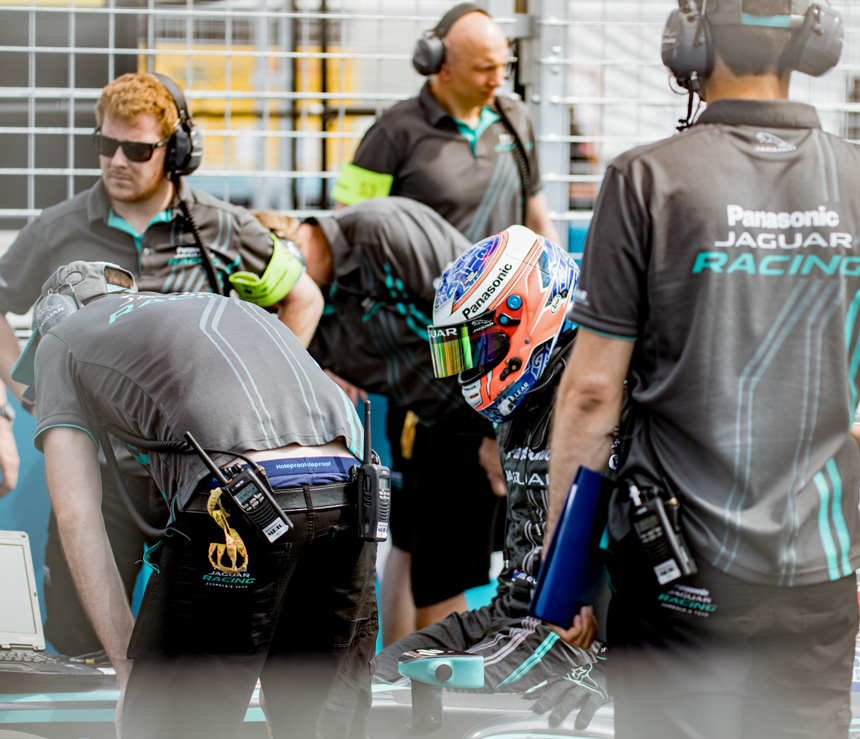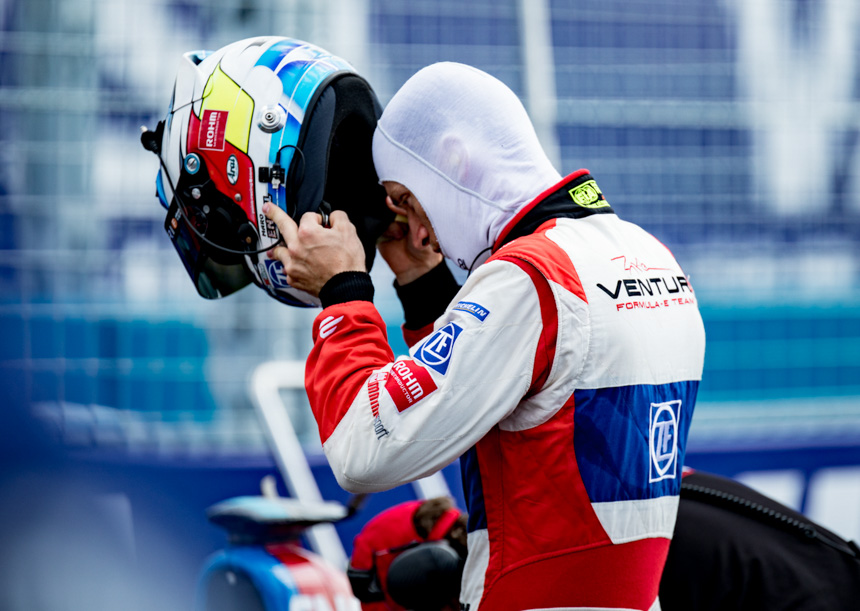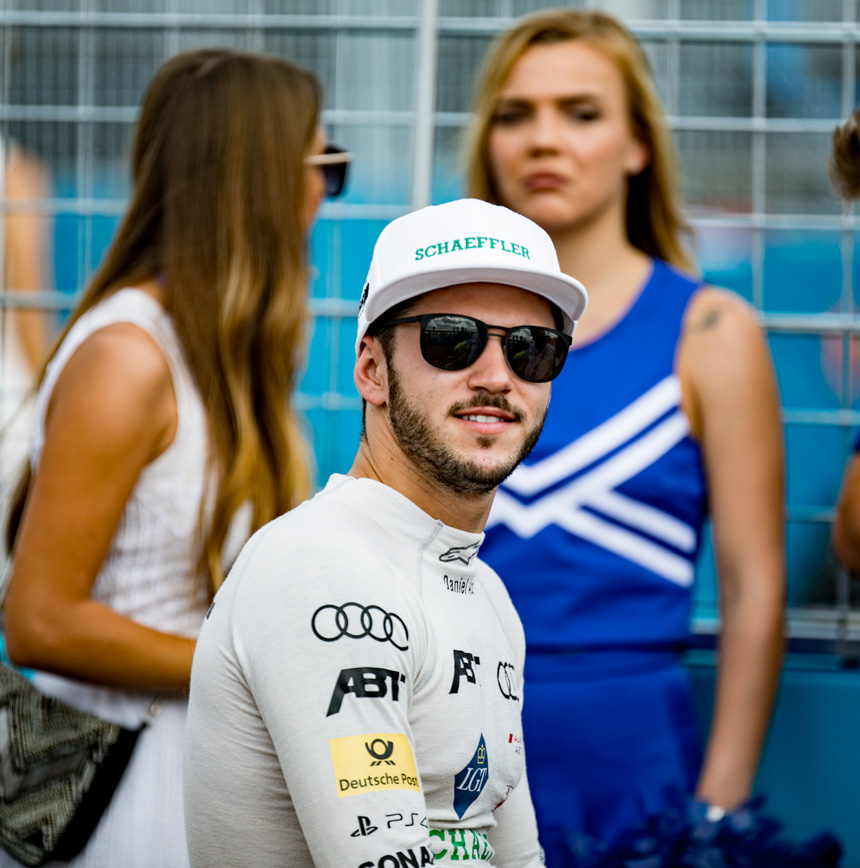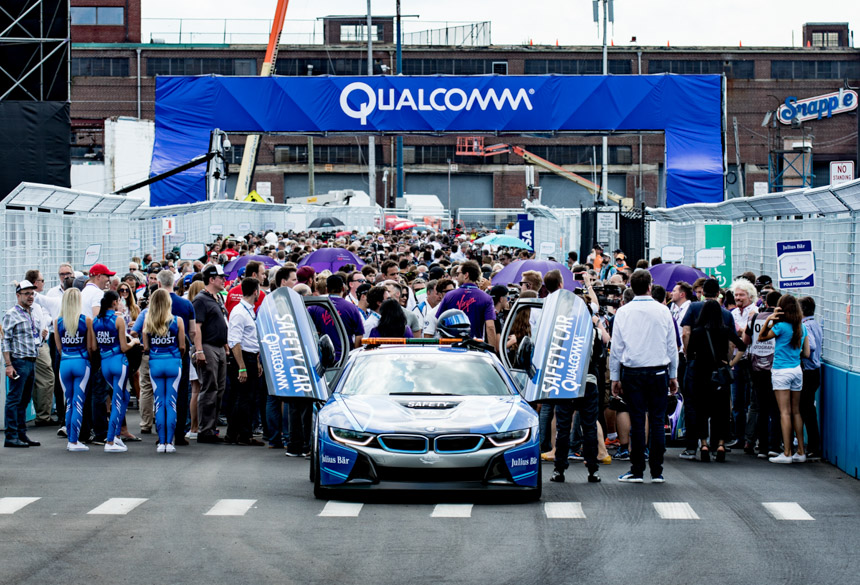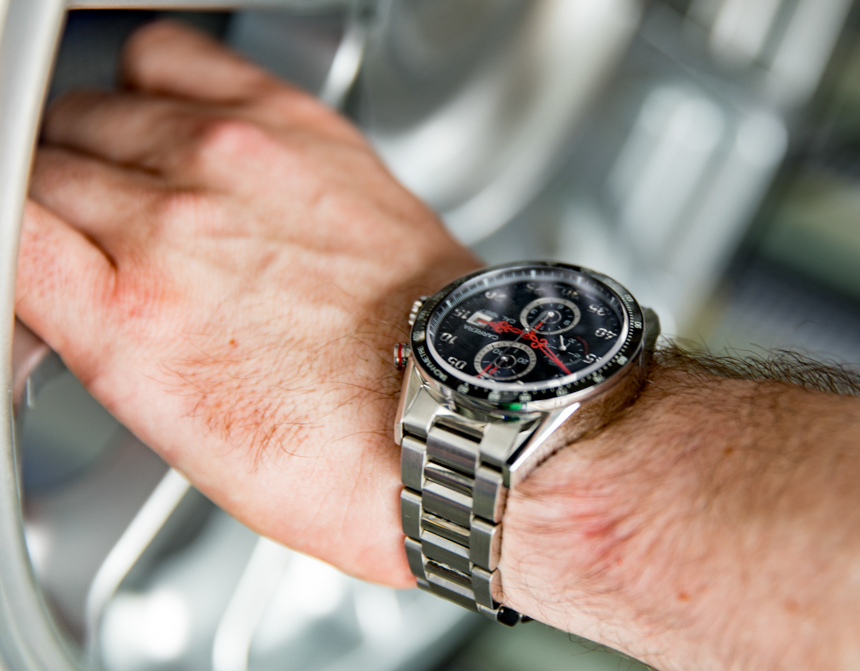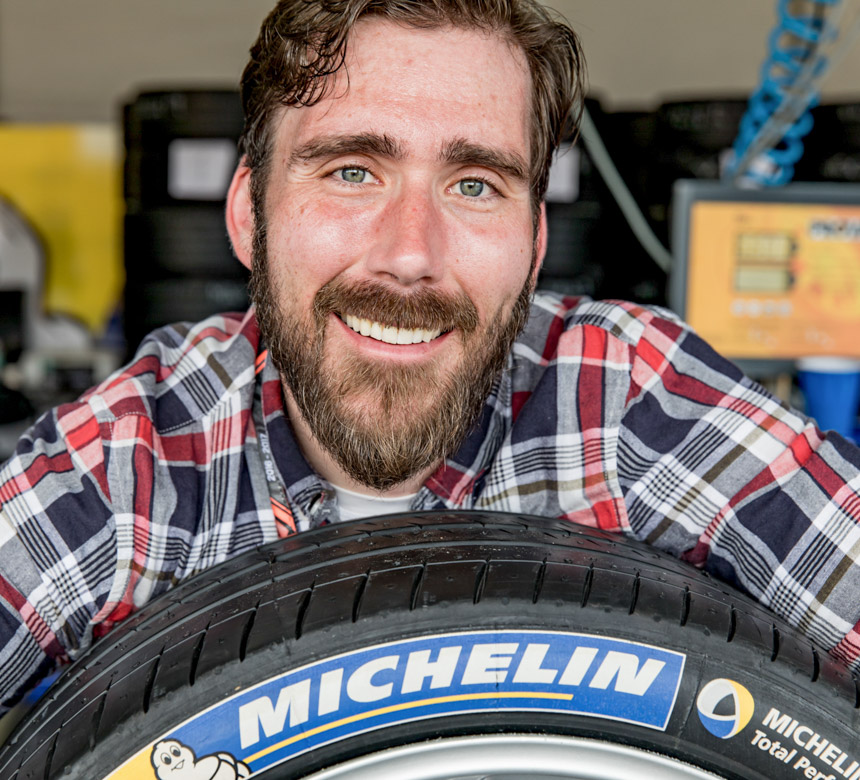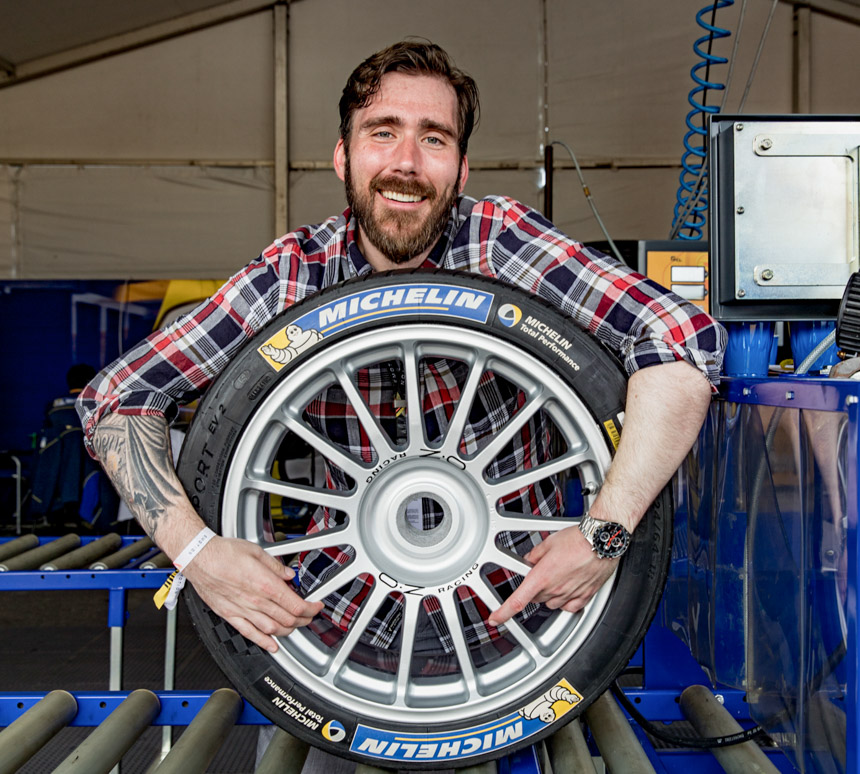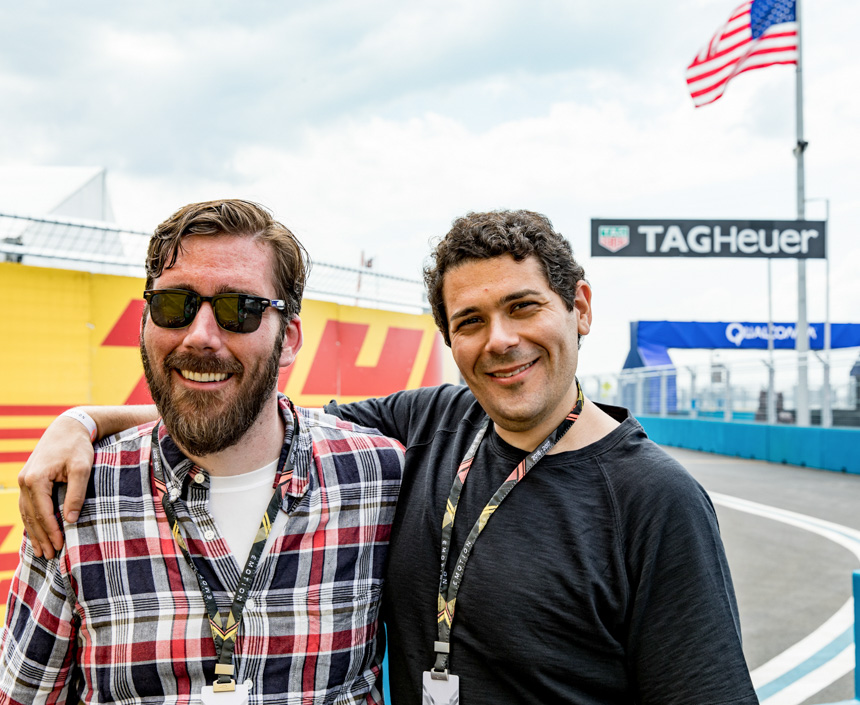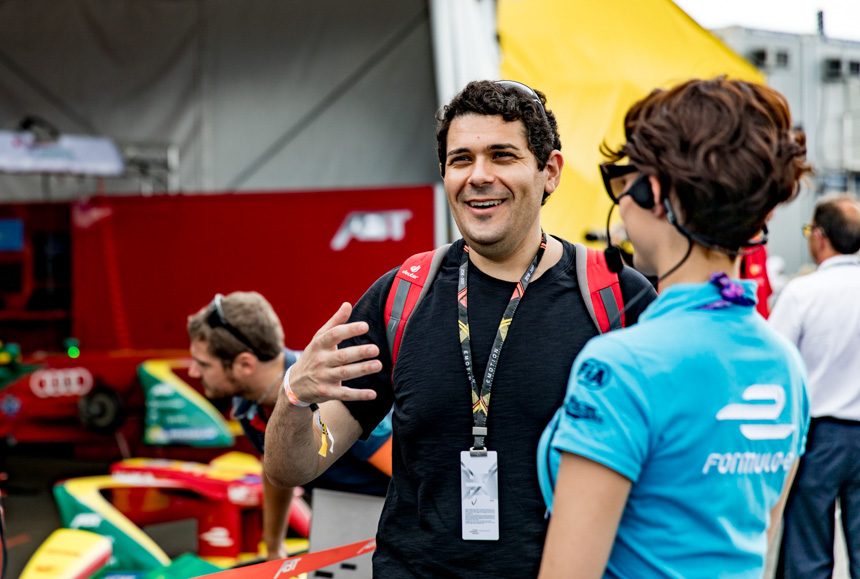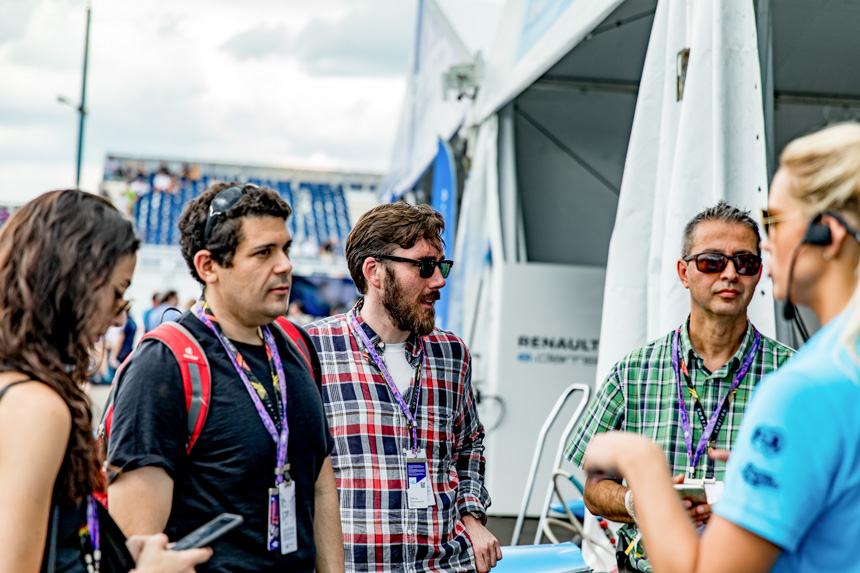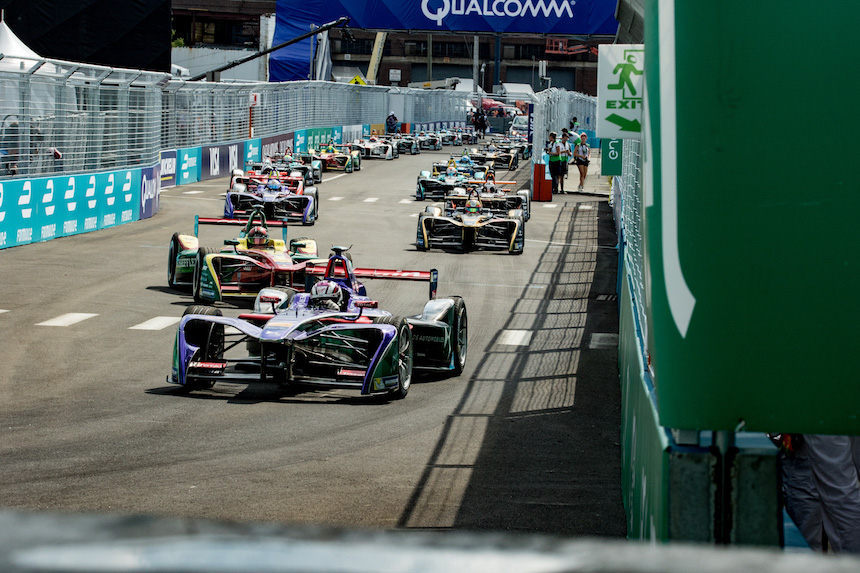
The First Race
We wound up in the standing area of the EMOTION grandstand, only about 30 feet from the area where we’d watched qualifying. That gave us a great view of the same 90-degree turn we’d seen the drivers take independently. We were pretty far along the track, and weren’t high enough to see the start, so our first experience was hearing the cars approaching, followed almost immediately by watching them overtake us.
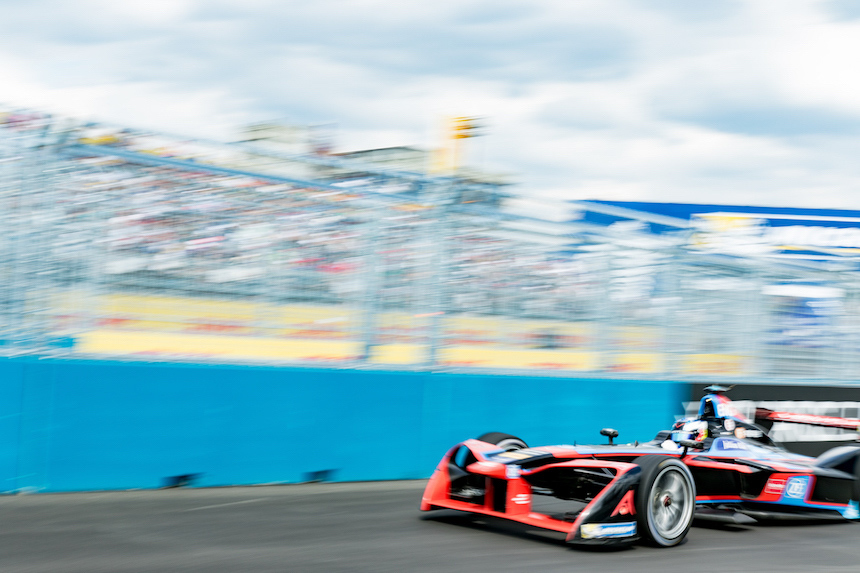
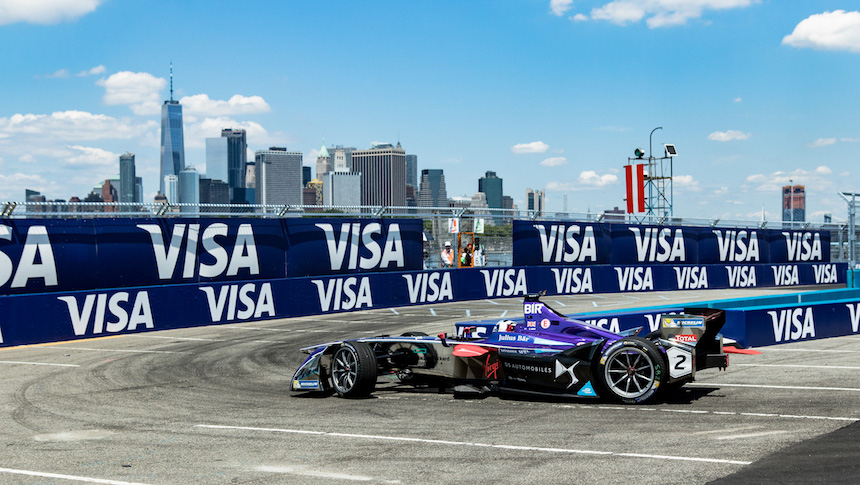
There has been some grousing among hardcore speed-freaks on the internet that Formula E cars are speed-capped at 140 mph, but they look more than fast enough when they stream past in a tight pack. The tracks and the turns on Formula E create close confines and the scoring system gives drivers an incentive to fight for every position, so the jockeying is intense. The margin of clearance could often be counted in inches, and it was sometimes miscalculated, resulting in cars rubbing each other or clipping the outside wall. The sound of the cars heightens the tension. The engines don’t roar with the raw power of internal combustion, but they emit a high-tech whir that conveys urgency. The closest analog to the sound I can think of — and it took me a long time after the race to place it — is the Batpod from Christopher Nolan’s Dark Knight movies. When a bunch of cars are howling by at once, crowding and jostling one another while turning sharply and at speed, it is difficult to agree with the position that the cars’ capabilities aren’t exciting enough.
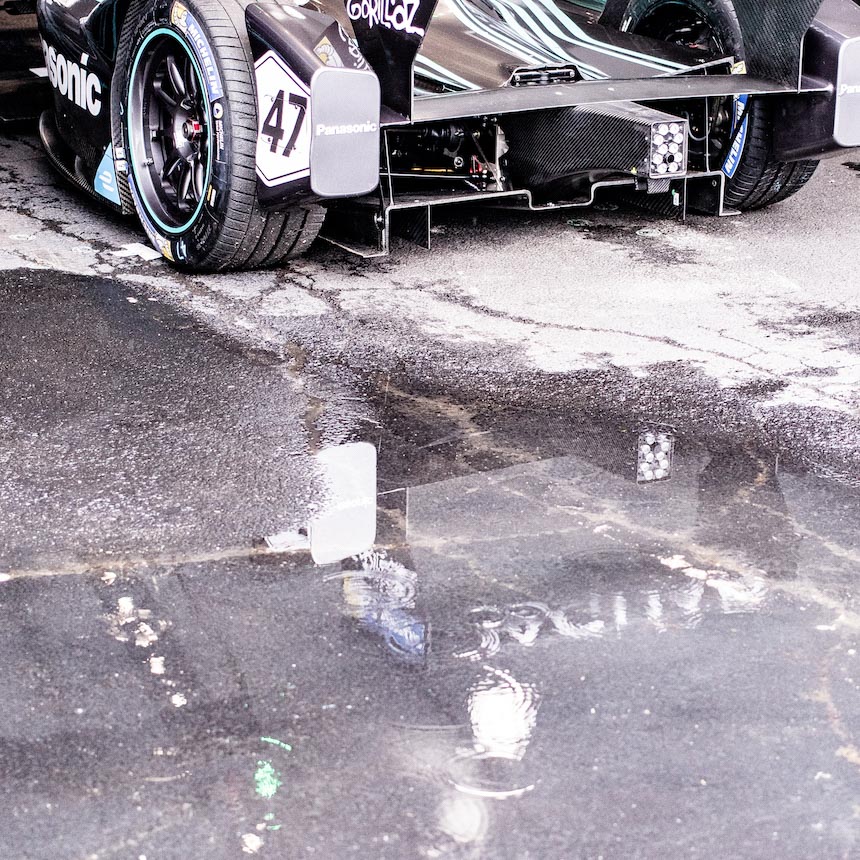
The first day’s race ran for about 45 minutes — a little over a minute per lap for 43 laps of the 1.2-mile track. Sam Bird of Virgin Racing secured an early lead and held onto it for first place, averaging around 60 miles an hour (an impressive figure given the twists on the track). It secured him a landmark victory as the winner of the first modern professional motor race in New York City.
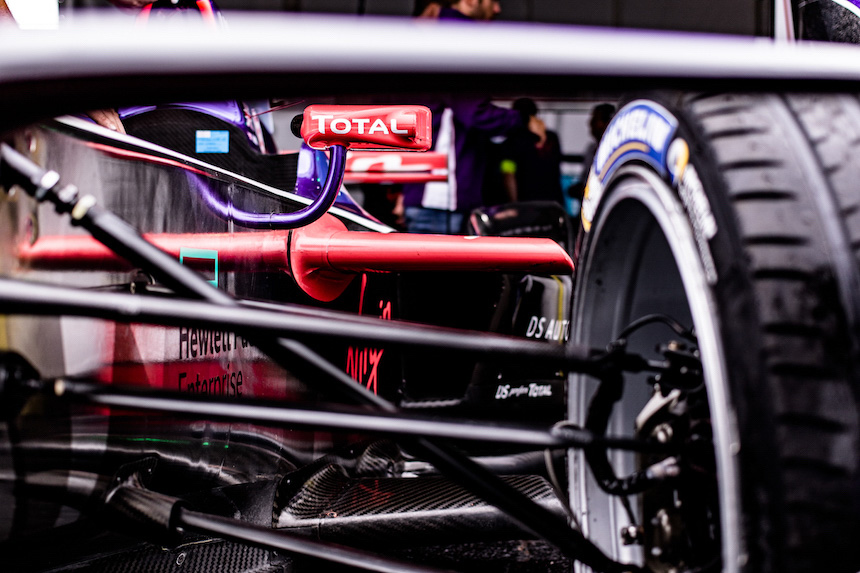
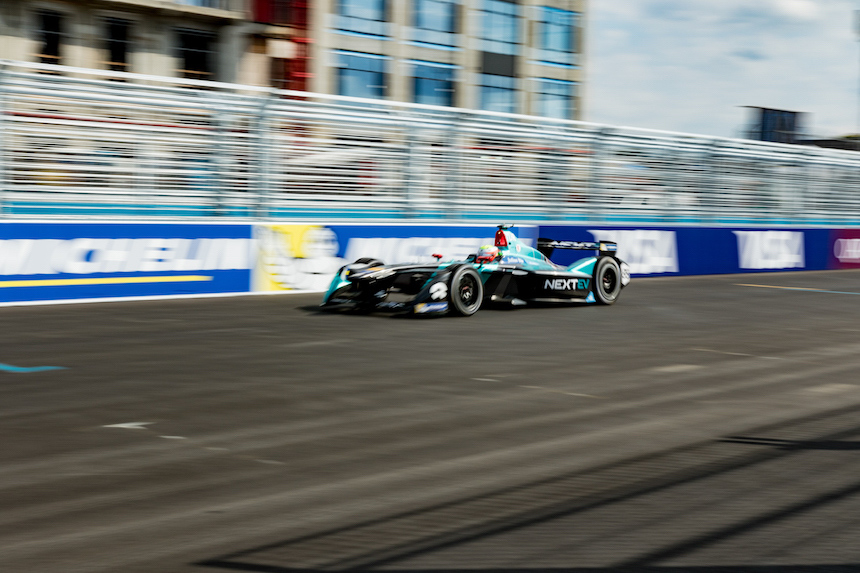
For his standings toward the season championship, however, the advance was significant but not definitive. In the FIA system that Formula E follows, the top ten finishers all receive points relative to their position, and the season champion is determined by the total number of points drivers accrue across all the season’s races. That provision made every position in every race potentially decisive for a driver’s overall standing. Bird had less than twenty-four hours to rest on his laurels before the competition would start anew on the exact same track.
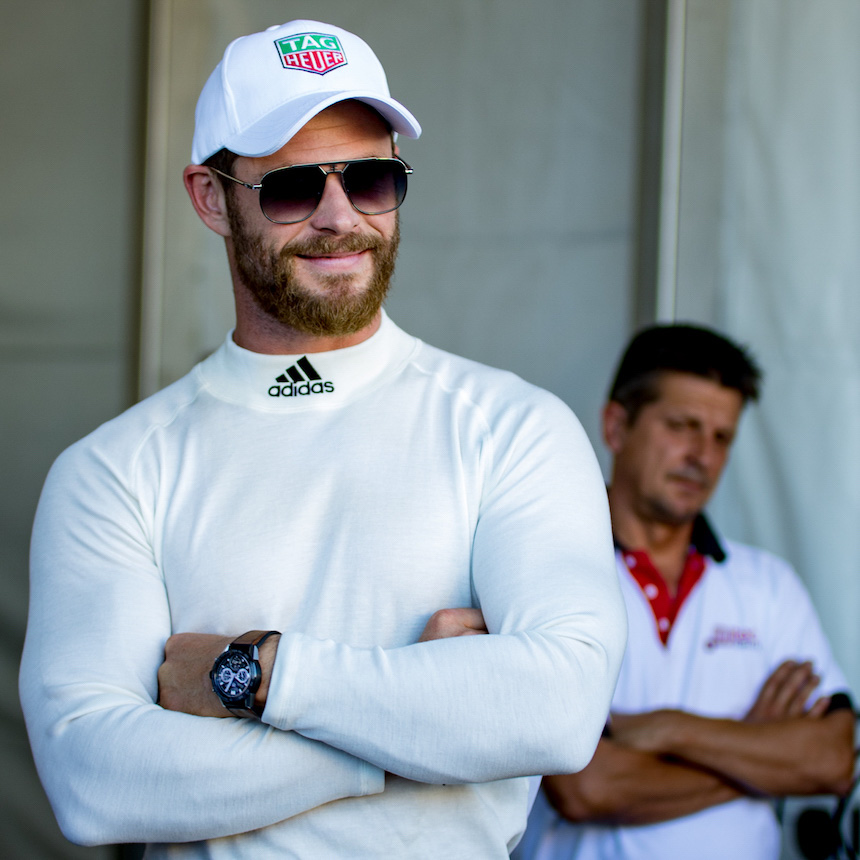
Sunday, July 15 – Downtime
Our schedule for the second race day was lighter than the first. The race itself had another qualifying round and a slightly longer ePrix (49 laps instead of 43), but there were fewer peripheral activities. Qualifying began at 9:00 am and the second ePrix was scheduled to wrap up by around two in the afternoon, which left less time for other pursuits. Perhaps not coincidentally, Sunday was also the day Chris Hemsworth, a TAG brand ambassador who portrayed Formula 1 legend James Hunt in the 2013 movie Rush, visited the track. His movements and activities — including driving his own lap in a Formula E car, had everybody buzzing, and would undoubtedly have distracted from other activities on tap.
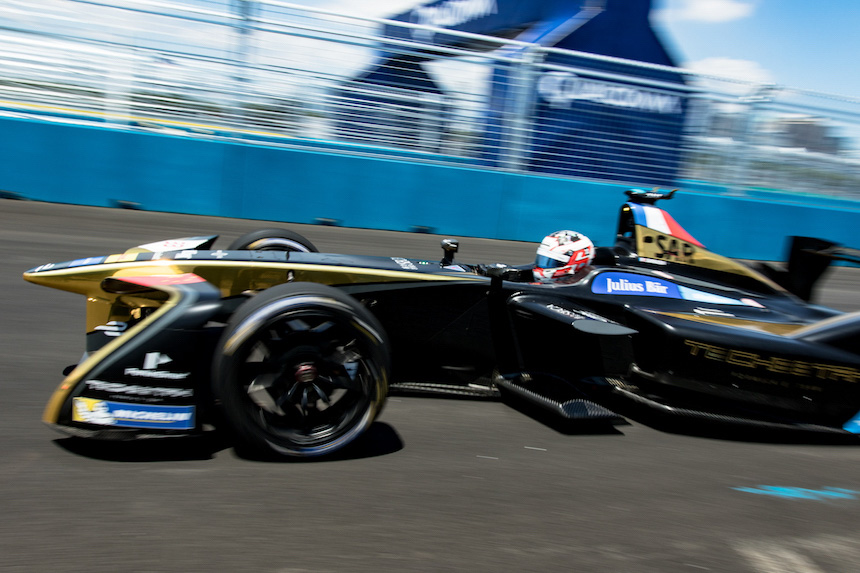
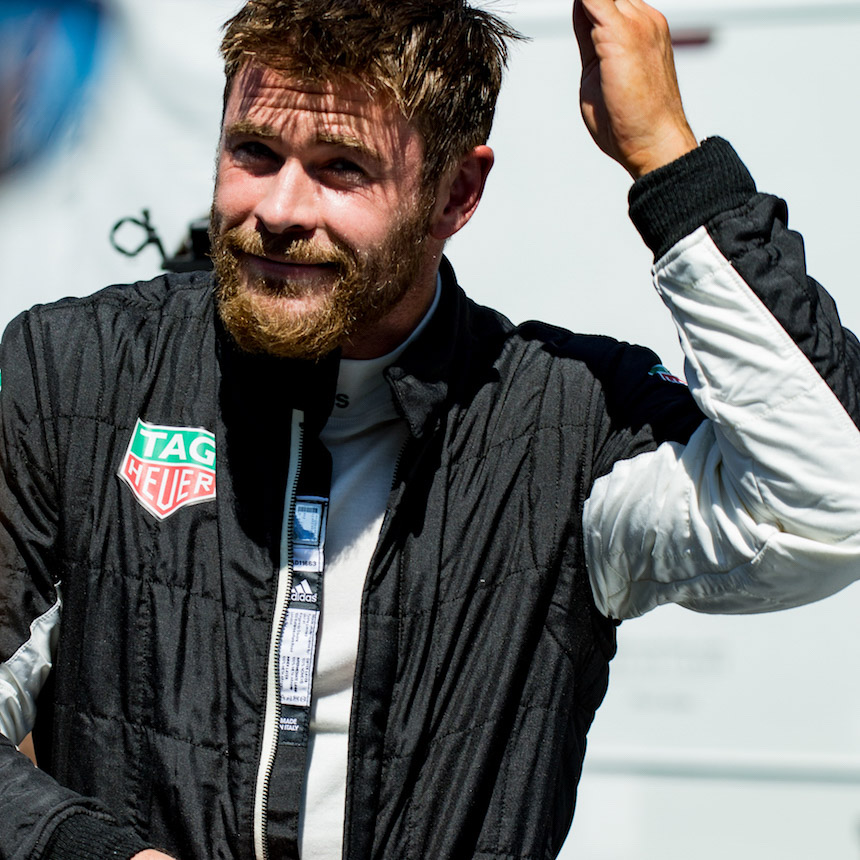
Ariel and I spent the morning back in the EMOTION club, hanging out with a few TAG Heuer representatives who were taking a break from the manic pace the weekend demanded of them. (John joined us but, ever attentive to his duties, only after snagging the requisite pictures of Hemsworth.) I enjoyed these little moments. Over the course of the trip, I got to spend time with a lot of TAG people — including the president of TAG North America and innumerable marketers, event coordinators, and other reps. The conversation inevitably turned to TAG’s relationship with Formula E and/or the watch market. TAG’s people of course provided great insight into both, but in doing so, they also consistently conveyed a sense of enthusiasm about their brand and its activities that is charming and somewhat infectious. That tended to make me better appreciate the unique characteristics of a trip as their guest. So we chatted about how things had gone and were going, watched some of the live acts playing the club, passed around the helmet Hemsworth had worn during his lap on the New York track, and generally marveled at the ability to take it easy for a little while amid so much activity.
Then it was time to head out for the second race.
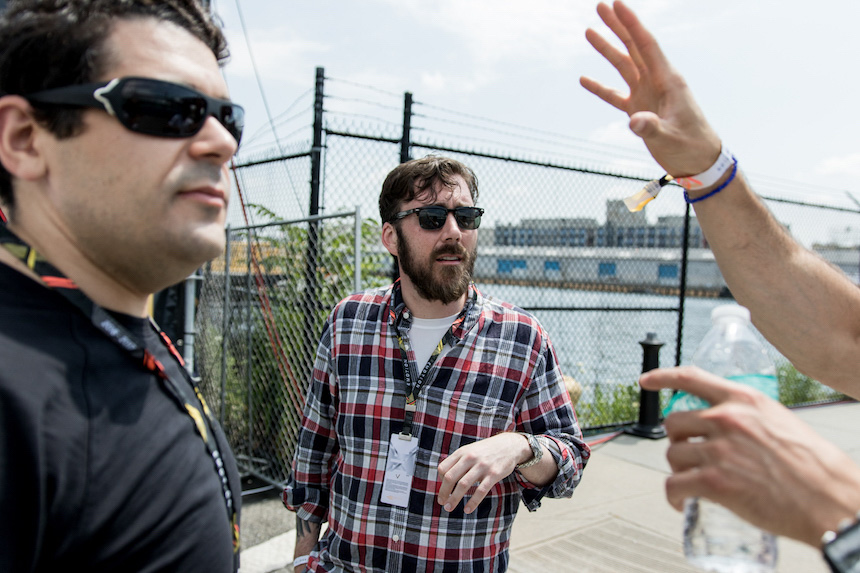
The Final Leg
Ariel’s flight home was earlier than mine, so I walked with him to the entry checkpoint and saw him off. Just before he left, I returned the watch he’d lent me for the weekend and put my own back on — I couldn’t have found a better symbol for the weekend coming to an end if I tried.
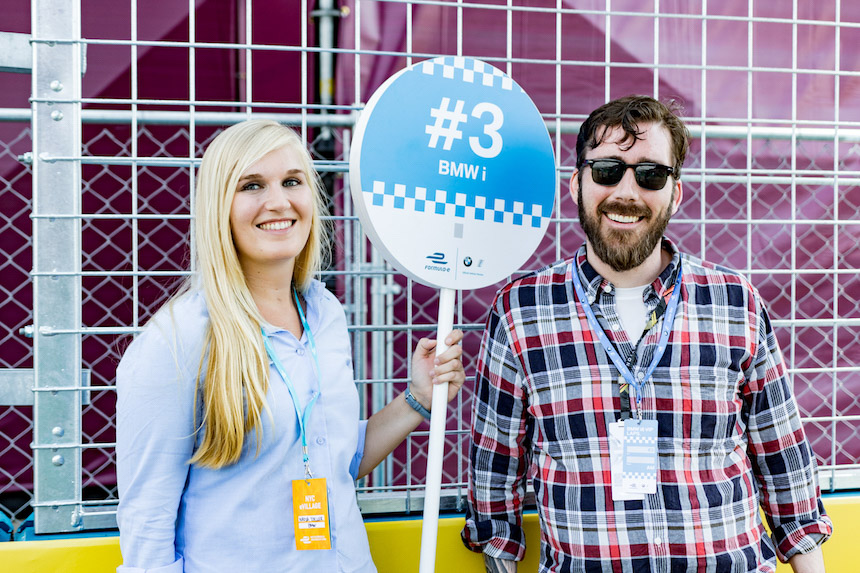
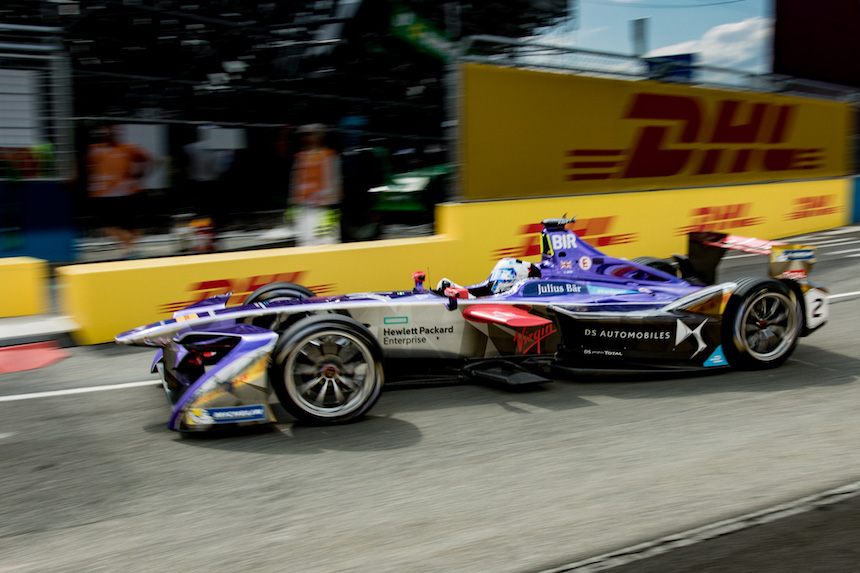
Having enjoyed special access all weekend, I decided to watch the second race from the free public viewing areas. Most of the people in the VIP facilities had, by definition, a stronger-than-average level of investment in the event, and I was curious to gauge the interest-levels and experiences of the general public who attended because it was worth gambling a little time to check out a new event. I walked through the Allianz eVillage — an open-air activity center that provided countless entertainments for people before and after the race, most of it helping to acquaint people with Formula E and showcase participating companies’ innovations in electric car technology — and found a spot by a section of the track that prompted drivers to zigzag left and then right very quickly.
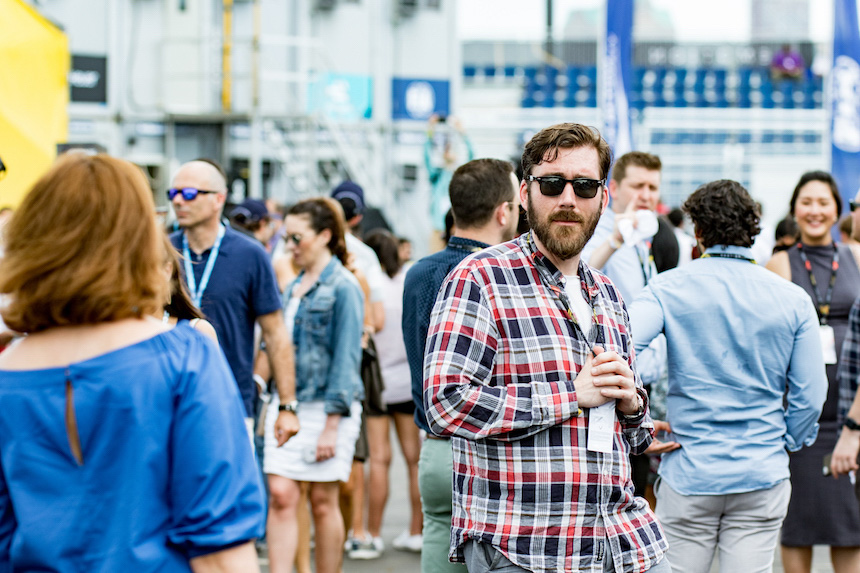
In the lead-up to the first race, I’d heard many people express a concern that the event was underpublicized — I had the same suspicion myself — but it appears not to have needed any more exposure than it got. The 18,000-capacity event reportedly sold out, no mean feat for an auto race being held in a city where most households don’t even own a car. And the spectators I watched the second race with in the free section seemed very enthusiastic. One man, evidently a big Formula 1 fan, patiently explained race basics to a group of new friends who clearly didn’t know anything about the sport but were interested enough in Formula E to attend and were now eager to learn. People all seemed excited and happy as they shuffled around the chain link fence to get the best view they could. Kids sat on shoulders. Pretty much everyone oohed and awed when the cars started whizzing past with that futuristic whirr that underlined their speed.
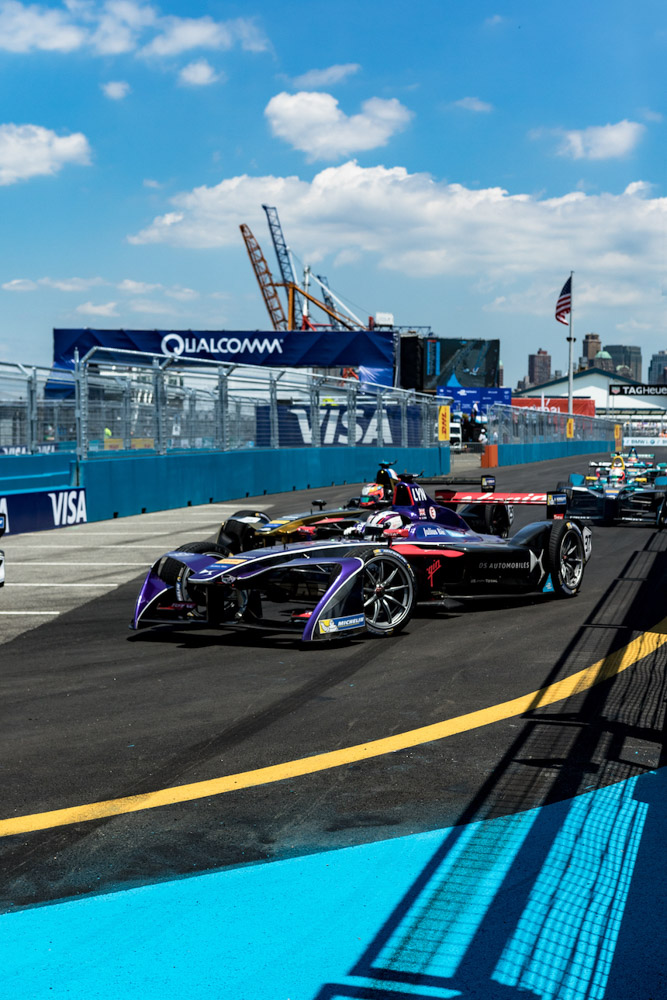
I couldn’t see as much of the track or the overall race action from my position on Sunday as I could the previous day, but as a trade-off there was a moment, just when the cars hit the sharpest curve of the zigzag, when they came very close to my position. Every single time the cars hit that spot, for 49 consecutive laps, the crowd tensed, the briefness of the moment making everyone respond to it all the more. And we wound up at ground zero for one of the most dramatic moments of the day, when Jérôme d’Ambrosio spun out and clipped the wall at the beginning of the turn (you can see it happening starting at around 2:40 here. The crowd was stunned; d’Ambrosio was unfazed, gunning the car right back into the swing of things like nothing had happened.
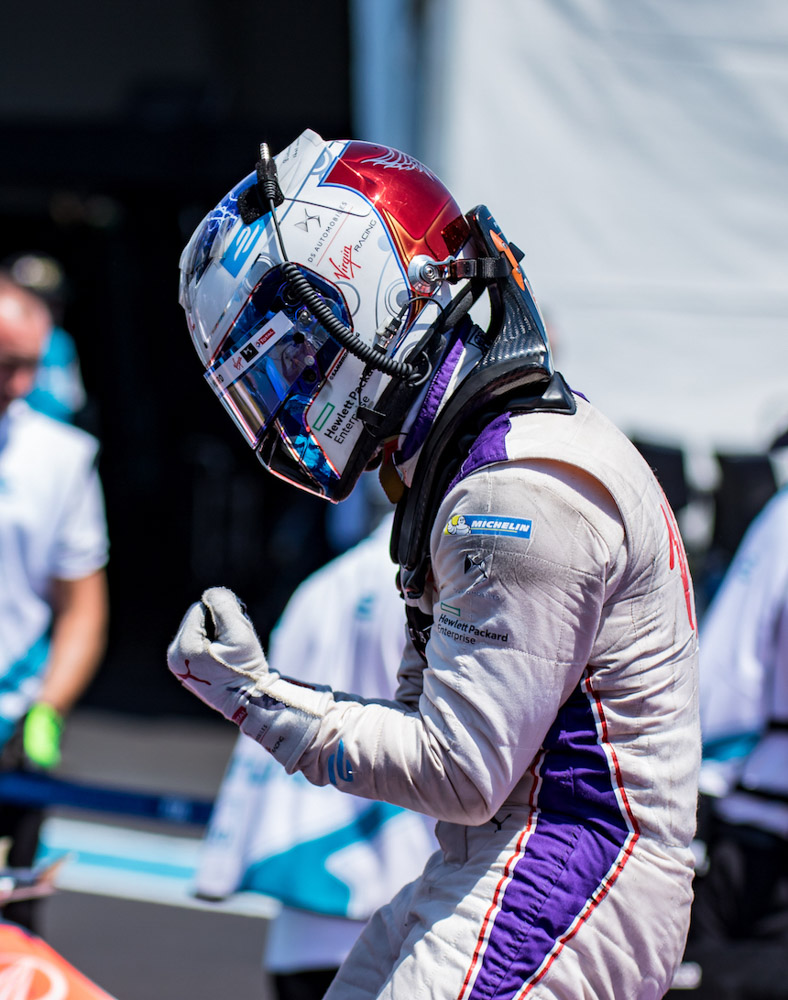
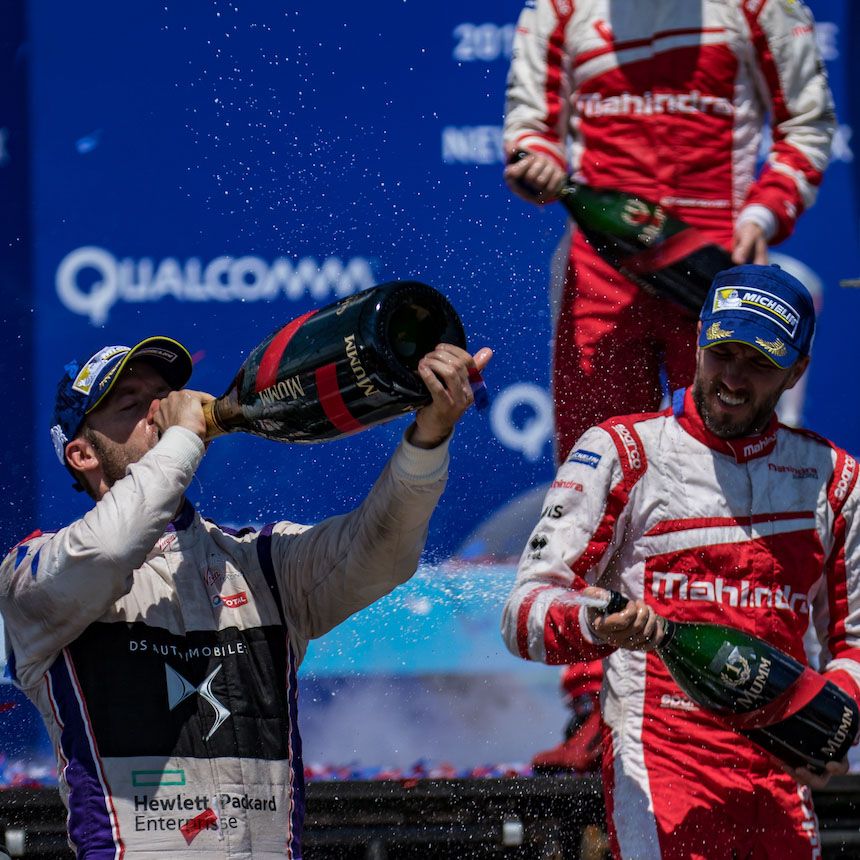
Sam Bird would win this race, too, making a sweep of the weekend and generating tremendous buzz. (After the last two races of the season in Montreal two weeks later, his team would place fourth overall, as would he as an individual driver.) By the time he was at the podium, I was meeting my car for a trip back to LaGuardia and then a first-class flight home.
In the coming weeks, I would read many accounts of the event. A few people, mainly Formula 1 partisans, found it wanting, but there were far more commentators who considered the weekend a big success and a landmark for the sport. I agree solidly with the latter. The race was definitely well attended, and in a way that is impossible to quantify, the attendees in all the areas I visited seemed to be having a great time and developing an interest in both the sport and the technology that powered it. Formula E, moreover, gained a lot of media exposure, which was one of the great benefits of bringing it to New York.
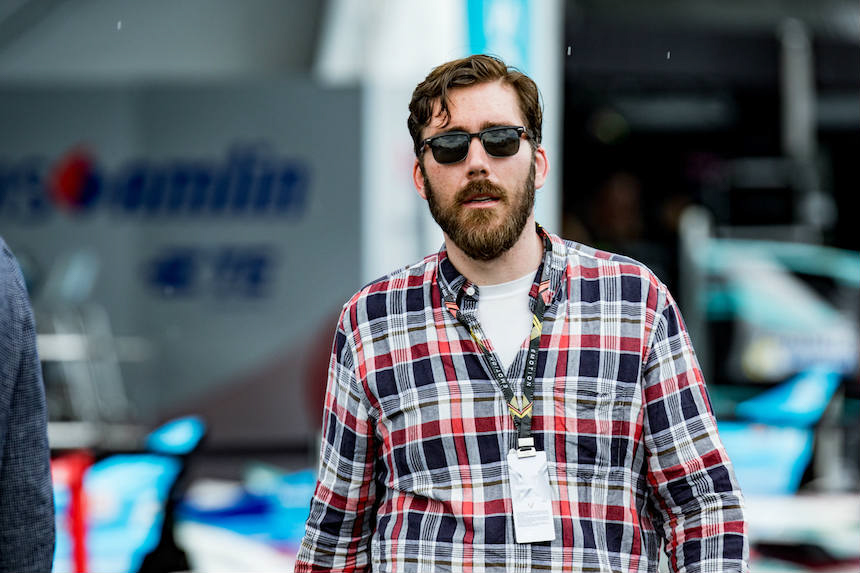
That said, I’ll admit I’m biased, and my own experience wasn’t just atypical, it was unique. I not only got to see and do many things most people didn’t, but I had the added bonus of not having done anything to earn them, which made it all a bonus. That inevitably put a rosy tinge on everything, and I will remember the trip that way, aided by the photographs you see here and a box of swag TAG Heuer very kindly sent me after the race. When this article is published and the last part of the experience comes to a close, I might commemorate it by adding a TAG watch to the roster — it’s a perfect memento, and I’d love to have an enduring conversation piece that I can use to recount the story of the trip. tagheuer.com

